


Jessie and Biswa on My Kitchen Rules for iphone, ipad and android indian link radio on the go Level 24/44 Market St, Sydney 2000 • GPO Box 108, Sydney 2001 • Ph: 18000 15 8 47 • email: info@indianlink.com.au

2 FEBRUARY (2) 2013 www.indianlink.com.au

FEBRUARY (2) 2013 3 NATIONAL EDITION

4 FEBRUARY (2) 2013 www.indianlink.com.au
INDIAN LINK
PUBLISHER
Pawan Luthra
EDITOR
Rajni Anand Luthra
ASSISTANT EDITOR
Sheryl Dixit
MELBOURNE
Preeti Jabbal
CONTRIBUTORS
Mitra,
Ahmed, Farzana Shakir, Sandip Hor, Rani Jhala, Saroja Srinivasan, Minnal Khona
ADVERTISING MANAGER
Vivek Trivedi 02 9262 1766
ADVERTISING ASSISTANT
Nitika Sondhi
02 9279 2004
DESIGN
Danielle Cairis
Proud members of:
Indian Link is a fortnightly newspaper published in English. No material, including advertisements designed by Indian Link, maybe reproduced in part or in whole without the written consent of the editor. Opinions carried in Indian Link are those of the writers and not necessarily endorsed by Indian Link. All correspondence should be addressed to
Indian Link
Level 24/44 Market St, Sydney 2000 or GPO Box 108, Sydney 2001
Ph: 02 9279-2004
Fax: 02 9279-2005
Email: info@indianlink.com.au
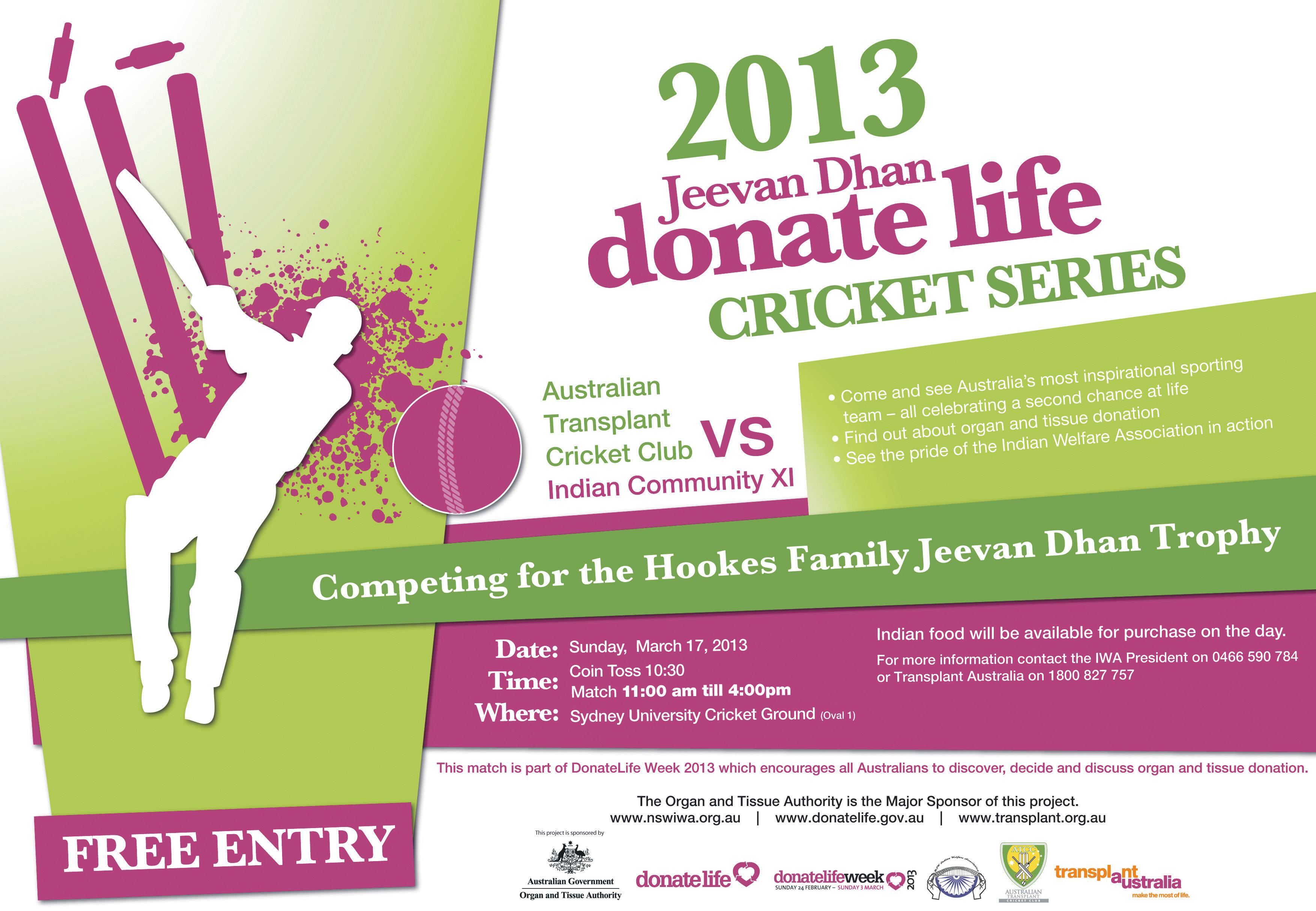
www.indianlink.com.au
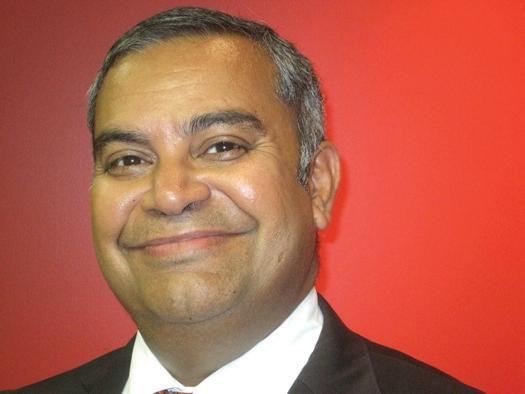
A good time
to retire?
was what took everybody unawares. Resignations in positions of power are very rare in today’s world.
In a frail voice, reading from a prepared text, the leader of over one billion Catholics, Pope Benedict XVI surprised the world by announcing he will stand down at the end of this month because he is too old and frail to cope with the demands of his ministry. After only 7 years in the job, the 85-year-old Pontiff became the first pope to stand down since the Middle Ages. Benedict told all that he had noticed his strength deteriorating over recent months and felt that he was no longer suited “to an adequate exercise of the Petrine ministry”.
While the idea of an 85-year-old retiring should not be a surprise to anyone, that someone in this position of power and influence has done so
Is there a good time for someone to leave public life and make room for fresh blood and ideas? The answer is definitely not with India’s politicians. Age does not make them weary or tired; rather the lure of holding on to their positions keeps them glued to their jobs. The Indian cabinet ministers are in their 60s and 70s, the average age being 65 years.
The oldest of them all is Prime Minister Manmohan Singh, who will be 81 this year; the youngest is 48-year-old Ajay Maken, a new entrant in the top echelons of Indian politics. This is ironical for a young nation such as India, with almost 75 per cent of its billion plus population below 40 years. Perhaps this is one of the reasons for the disconnect between a large section of the Indian population and the politicians. The population is young with over half below the age of 25, the ruling elite has only 1 out of 33 ministers below the age of 50. A political party which can set mandatory
retirement options for its politicians could be popular in the next elections. However, with the current Congress party discounting this option, this is a dream which will not be coming true any time soon. Even the strongest challenger to Congress at the moment, Narendra Modi is himself 62.
Meanwhile, other countries have done well with their youthful leaders. Barack Obama became the president of the United States at 47, United Kingdom’s Prime Minister is 46 years of age and looking even inwards Prime Minister Gillard is 52. While their politics may be different (and their public standing), all of them are highly articulate and have reached out to the younger generation in their respective countries. That spark has unfortunately not been ignited in India. Perhaps there will be a time in Indian politics when the incumbents make way for the younger generation and step aside for them gracefully. They may show more faith in their younger colleagues and a willingness to take a risk in them. And maybe, pigs will fly at the same time.
FEBRUARY (2) 2013 5 NATIONAL EDITION
PAWAN LUTHRA
EDITORIAL
Ritam
Preeti Thadani, Sydney Srinivas, Priyanka Tater, Priyadarshini Chidambaranathan, Rohana Wood, Noel G deSouza, Tanveer
SPIRITUAL Global Organisation for Divinity
Gopa Kuteeram Classes
Sun 24 Feb Free spiritual educational classes for children aged 4-12 years on the 4th Sunday of every month between 4 - 5.30 pm at the Crestwood Community Centre, Crestwood Drive, Baulkham Hills. Designed to impart knowledge of ancient Hindu religion, culture and to instill universal values through the teaching of slokas, bhajans, stories from Puranas and conducting creative and interactive sessions and activities.
Details contact Jayashree - 02 9620 4676 or email gopakuteeram@ godivinity.org.au
New class in Liverpool from 2013, contact Deepak Vinod0422 127 956
Chinmaya Mission Australia
activities
Mon 25 Feb – Sat 2 Mar 7:309pm Public talks on “The Supreme Knowledge, The Supreme Secret”, Free talk on the 9th Chapter of Bhagavad Gita by Br Gopal Chaitanya, one of the disciples
of the current Master of Vedanta H.H. Swami Tejomayananda. This chapter contains some of Sri Krishna’s powerful instructions on ways of achieving freedom from worry, despair, fear and guilt.
Details Mahal 02 9482 7178. For info on Vedanta, Bhagavad Geeta and devotional classes, Br Gopal Chaitanya on 02 8850 7400 or email syd.info@chinmaya.com.au
Brahma Kumaris Mahashivratri Sat 23 Feb Public program in Hindi on the significance of Mahashivratri. Wentworthville Community Centre, 2 Lane Street Wentworthville.
Details BK Asha on 0435 196 146 or BK Monika on 0430 403 857
Ramakrishna Sarada Vedanta Society of NSW activities
Shivaratri celebration
Sun 10 Mar 10.30am to 12 noon
Program: Spiritual music, Hari Om Ramakrishna chant, silent meditation, group chanting of ‘Om’ 108 times, 2 speeches including one by Pravrajika Gayatriprana (Senior nun of Ramakrishna
Order). Offering and distribution of sweets and savouries.
Venue: Vedanta Hall, 15 Liverpool Road, Croydon. Details 9745 4320 or email: admin. saradavedanta@bigpond.com
Website: www.saradavedanta.org

Spiritual leader Dr. Pranav Pandya’s Satsang tour
20-24 March The All World Gayatri Pariwar is organising a satsang tour of Sydney of its director and head, Dr. Pranav Pandya. Details Neeraj Ram 0405 777 539.
ARTS
Sydney Film Fest’s Travelling Films Festival
Mar 8-10 Two-day festival with five feature films and three shorts from six countries, including Valley of Saints, a film set on Dal Lake in strife-torn Kashmir. It tells the story of an unlikely love while raising important environmental issues. Program also includes authentic Movie & Meal events and a short film program and workshop presented by Blackfella Films. Venue: Casula Powerhouse Theatre, 1 Casula Powerhouse
LETTERS TO THE EDITOR
Road, Casula NSW 2170. Details 02 9824 1121.
The Last Chai Feb 15-23 Trikone Australasia presents a Bollywood-inspired theatre production as part of the Sydney Mardi Gras Festival, at Sidetrack Theatre, 142 Addison Rd, Marrickville. Bookings www. sidetrack.com.au. Details www. trikone.org.au
LECTURE
Building a culture of nonviolence: the legacy of Mahatma Gandhi
Wed 26 Feb 6:30 – 7:45pm
Ela Gandhi, granddaughter of Mahatma Gandhi delivers the first “So, what?” Lecture of 2013, and will discuss the importance of strategic interventions in education to promote positive action on nonviolence at various levels of academia, at Leighton Hall, John Niland Scientia Building, UNSW Kensington Campus.
Details 02 9385 8512, Email: so.what@unsw.edu.au
Disillusioned diaspora
I was one of the privileged invitees to meet and greet a visiting Indian Goodwill Delegation of Parliamentarians at the Indian Consulate recently. The take home message as interpreted by me was Lage raho Munna Bhai – even with your most mediocre performance, as long as your remittance fills the Reserve Bank with foreign exchange, the government is happy (with no inspiration to reach your potential). I was sad and disappointed to hear that a Pravasi Bhartiya is only valued for the money they send home and not for the deep sense of commitment and passion we feel for our motherland.
The leader of the delegation, a senior MP from the ruling party, reiterated the laurels of the few outstanding non-resident Indians specially in the USA who would have accomplished even more had they been given an opportunity in their homeland, adding to the national pride of India. The Indian government must look at the plight of an
average Indian who lives and dies as a second class citizen in another country. The issue of migration is much more complex than chasing the sunshine. If our remittance is used for this kind of goodwill global tour and many other questionable enterprises, then we have the right to question the accountability, transparency and sincerity of our rulers. Indians now are far more refined, confident, educated, well informed, objective, analytical and assertive, not to be silenced by words of meaningless praise. Indians leave their country for varied reasons but one of the striking characteristics most of them share is their unconditional allegiance to India. The visiting dignitaries were offended by questions like the rampant corruption, inaction against the current politicians with criminal records, the safety of women, and the unrelenting saga of lack of water and electricity and poor roads, as well as 70% of undeveloped villages. Roadside urination is so common that it’s not even considered undignified or unhygienic. Nearly 60% of Indians do not have access to respectable toilet facilities.
These are some of the questions I would like to use for brainstorming at the grassroots level before the next government is elected. Our Consul General, Arun Kumar Goel in his brief tenure of less than a year, has established himself as a true goodwill ambassador with genuine concern and understanding of how much we want to connect with India and help in every possible way to retrieve our lost glory. I was hoping for similar spirit and sentiments from our visiting parliamentarians, rather than merely patting our backs as a mark of their accomplished goodwill world tour.
During my recent visit to India I was impressed with the emergence of a no-nonsense attitude, new awakening of our youth and the ability to unite to bring reform. Maybe replacing octogenarians with young leaders will bring the change we have been patiently waiting for since six decades.
Satyamev Jayate!
Shailja Chaturvedi West Ryde, NSW
SENIORS
Seniors Week
Celebrations 2013
Sun 24 Mar 10:30am-2:30pm
Sri Om Care (Sri Om Foundation) holds annual Seniors Week Celebrations at Auburn Town Hall, No. 1 Susan Street, Auburn. The program includes multicultural concerts and talented performances by children, youth and the seniors along with talks by eminent doctors and the release of a special edition of Prathama, Seniors News Magazine. Details Jay Raman 0410 759 906.
MISC
Australia Chapter of Aam Aadmi Party
The Australia chapter of the Aam Aadmi party (AAP) invites volunteers across Australia to join and work towards education and awareness, expanding membership and for raising funds towards this political movement. For information or to volunteer in AAP activities, email aap.aussie@ gmail.com or contact Namita 0426 250 072.
6 FEBRUARY (2) 2013 www.indianlink.com.au TO SUBSCRIBE TO INDIAN LINK please scan HeRe EPAPER,
What’s on


FEBRUARY (2) 2013 7 NATIONAL EDITION


8 FEBRUARY (2) 2013 www.indianlink.com.au
State Sponsorship forIT professionals ona457
Free Visa Advice & Assessment* for Students & their Employers
Course Admissions (Australia wide), Student Visas, Work/Sponsorship Visas (457s, RSMS, ENS), Partner Visa, Family Visa, Tribunal Appeals & Waivers, General Skilled Migration. Calling all Students, Employers! There has never been a better time to apply for a SC 457 visa (Employer Sponsorship)
• “I sincerely appreciate the time you spent reviewing my case as it became complicated due to time frames. Your advice was very helpful & gave me a new hope. Finally, I got my PR. Thank you so much for your help.”
– Vikas, Homebush, NSW
• “My 457 visa is granted. Thanks for the co-ordination, Ramneek Sir.” – R.T., Westmead, NSW
• “This is a special note for thanking Mr. Ramneek for helping me throughout my 457 visa process.” – Maruthi, Homebush, NSW
• We really appreciate Mr. Ramneek’s support for my 457 visa application. He was very organized and prompt, which we believe lead to successful & quick outcome even though we are a newly established company without much financial result – H. Uzumasa, Penshurst
• Ramneekbhai, thank you so much for your help..I got my 457 visa… excellent service, thanks - Krushnakumar Patel, Parramatta.
• “Thanks lot for my sponsor (457) visa. It didn’t look possible, but I got it finally with Ramneek’s help & guidance.” – Kiran Kumar Patel, Harris Park
• “Ramneek Sir handled my SC 190 visa & I got approval within 4 weeks of lodgment. I acknowledge my deepest thanks for his fabulous work.”
- A. Shah, Perth
• “Because of his sound knowledge & experience, my 457 has been approved within 2 weeks. I would highly recommend – Rajneesh Gaur, Bikaner
• “I would like to express my sincere thanks to Ramneek Sir for his well done work in getting my PR.” – M. Marediya
• “Has impressed me with the accuracy of his guidance & the time frames he gave us for our (Sponsorship/457) application were spot on. I personally recommend anyone to use his services.”
– Sana Glass Pty Ltd., Lansvale, NSW
• “Thank you very much for your support while organizing the sponsorship application for our employee. We are very pleased with your work ...will confidently recommend you & your company to our business partners & friends.” – Vaucluse Auto Repairs P/L., Vaucluse, NSW
• “Initially, I was a bit doubtful whether my company will get the (457) sponsorship or not because mine is a small company. Thank you very much for your hardwork & guidance.” – Prime Partners Pty Ltd, Casino, NSW
• “Everyone thought that I won’t get my 457 visa....thank you for making my application successful.” – S. Rao, Casino NSW
• “You have been excellent in handling our case & all its difficulties including my daughter who has already turned 19.” – K. Sanyasi, Warwick Farm, NSW
• “Ramneek handled my sponsored migration visa with precision of a surgeon. I reckon, my application’s short processing times was owing to Ramneek’s immaculate understanding of the process, sharp eye for details in reviewing documents and presentation of the case. The first check list for submission that was customized for my professional background and situation) that Ramneek provided served as the ultimate guide in assembling the application. All my queries were answered in less than 24 hours. Such professionalism and efficiency made my visa process a breeze… highly recommended for anyone serious about his/her immigration plans.” – V. Srivastava, Melbourne
• “Thanks for the effort taken in securing Ganga’s work visa. I know it was a difficult case, much appreciated, thanks.” – Dhaya Chandra Pty. Ltd., NSW
• “I withdrew (my) first 457 visa application…& I got it the second time with Ramneek’s help. Thank you so much.” – C. Koppela, Homebush, NSW
• “Ramneek, handled our matter in a very professional way…was

precise with what he wanted…his knowledge is deep and accurate. I felt very comfortable.” – Shree Ram Pty Ltd, Lidcombe, NSW
• “Many thanks for acting promptly when needed.”
– K. Patel, 457 Sponsor, Sydney
• “Very satisfactory service provided by Mr. Ramneek Madahar regarding my visa complications.” – P. Singh, Ellenbrook, WA
• “Everything was well planned & Systematic. Must recommend for Immigration issues.” – H. Gandhi, 457 Visas, Merrylands, NSW
• “I am really very thankful & overjoyed... lead me through the toughest situation to final success.” – N. Singh, GSM grant under 2 months.
• “After 8503 (no further stay), condition waiver, my student visa was refused. Thank you Mr. Ramneek for a successful appeal at the Migration Review Tribunal without a hearing.” – P.D. Glenmore park, NSW
• “I got my 457 work-permit (from student visa) within 4 weeks. Mr. Ramneek done his work very accurately, on time, without any failure & provides perfect guidance. I am very happy with his work & very thankful to him.”
– Chirag Patel, Kew, Victoria.
• “I was able to negotiate through the complicated process & retain a baker full time in my business. For 457 working visas, Mr. Ramneek Madahar’s services are highly recommended. Definitely a 5 star service.”
– Harry, Bakery Owner, Oatley, NSW
• “I was finally able to receive confident & correct advice in relation to my situation from Mr. Ramneek Madahar.”
– G. Bastola, For SC457 Visa, Homebush, NSW
• “Thank you for your timely assistance with our restaurant sponsorship and 457 visa grant.” – CH Patel & DC Patel, Restaurant Owners, Camberwell, Victoria
• “Ramneek Sir has made our 457 visa 100% successful. Thank you forever.”
– Shruti Shah, Merrylands, NSW
• “I was a student in Australia. Mr. Ramneek helped me for a 457 visa.”
– Chaudhari Prakash, Ashfield, NSW
• “I was on a Bridging visa for my SC885 visa application on 110 points. Mr. Ramneek made my 457 visa possible.” – C. Patel, Merrylands, NSW
• “For any complex cases, to anyone who needs help in immigration... don’t worry you are in safe hands.” – A.H., 457 Work Visa, Cronulla, NSW
• “I sincerely recommend Mr. Ramneek’s services for immigration.”
– K.K., Central Coast, NSW
• “Thank you Ramneek, I wish you all the best.” – S. N., GSM Visa, Egypt
• “Mr Ramneek Madahar, thank you very much for our PR. Your efforts are appreciated & thanks for looking after my case.”
– D. Patel, Business Skills, Melbourne, Victoria
• “I am thankful to Ramneek for my permanent settlement in Australia.”
– Vikas, GSM, Parramatta, NSW
• “I applied for Regional - SC119 visa under the DRC on 15/11/2011, the visa was granted on 09/02/2012. Mr. Madahar has handled my application very well.” – Vijaya, Bourke, NSW
• “Thank you Mr. Ramneek for my ENS PR under exceptional circumstances.” – S. Kumar, Croydon, NSW
• “Thank you for your support & help towards my ENS PR.” – S. N., Ingleburn, NSW.
• “I am very thankful to Ramneek Sir for his help & support for my ENS residency. I had no hopes left & was planning to go back to India with my family.” – K. Shah, South Strathfield, NSW
• “Thanks Very – very much for your help for extending my student visa and 457 and RSMS advice.” – A.Rani, Smithfield
9 DECEMBER (1) 2012 www.indianlink.com.au
The Great Learning Tree Pty Ltd (Ramneek Madahar, RMA# 0428459) UNIT 6, 24-26 Morwick St., Strathfield, NSW 2135 (5 min. walk from Strathfield Station. Opp. Strathfield Recreational Club/Tennis Courts) * Provision of complimentary advice &/or assessment for our eligible students &/or their employers is at our sole discretion. Education, Career & Visa Solutions @ The Great Learning Tree
For appointments, please call 02-9745 3106 or 0412 764 660 or email: enquiries@tglt.com.au Our clients are our best spokespeople:
What were they thinking?
BY RITAM MITRA
Our parents are like, ‘Oh, look at that girl, she’s doing medicine.’
We’re like, ‘Why don’t you adopt her?’ Does she look as good as me? No!”

This comment was a small prelude to what Australia could expect from Jessie Khan and Biswa Kamila, the NSW duo who teamed up recently in Channel 7’s reality show My Kitchen Rules (MKR). They ended up going on a ride that has definitely changed their lives forever. On the show, a pair of contestants from each state try to transform an ordinary home into an instant restaurant, complete with theme and table decorations – but they only get one night to impress the judges.
Jessie, a 25-year-old whose family hails from Bangladesh, and Biswa, a 23-year old IndianAustralian, labelled themselves the ‘Spice Girls’, and formed a huge part of Channel 7’s initial marketing campaign for the show. The high school friends were an immediate success for the network – but for perhaps all the wrong reasons.
From their very first words on the show, it was clear that confidence was no barrier for this pair. “We are the true spice girls. Our food is fantabulous - the other states better watch out!” they claimed. Yet it would not be their turn to host a dinner for another three episodes – and so Jessie and Biswa began their long, painful journey towards infamy and social media suicide through an avenue that was both cringeworthy, yet compelling: their relentless, unfettered criticism of almost each and every dish served to them by their mostly gracious counterparts.
From the first dish of the series, Jessie was ruthless. “The entrée is presented to me and my heart sinks. All the vegetables in that entrée, I dislike very much. I don’t eat eggplants. And especially capsicum. I don’t eat tomatoes at all. I hate tomatoes. Capsicum.”
After refusing to eat more than a mouthful each of any of the dishes served up to them in the first episode, the second barb of Jessie and Biswa’s two-pronged
assault on Australian television sets was shot – their incessant arrogance that aimed to belittle their opponents, but in the end only inflated their air of brazen self-importance. As the first dinner wrapped up, co-judge Pete Evans asked the contestants whether any of them were willing to put their hands up and say they have what it takes to be at the top of the group.
As the other pairs looked around the table modestly, avoiding the obviously loaded question like any socially capable individuals would do, Jessie and Biswa glanced at each other and started giggling. “We don’t mean to brag, but… I don’t see any reason as to why we won’t (get full marks from the judges)…the other teams are underestimating us, but they just haven’t seen what we can do,” they said.
If arrogance and unwarranted criticism weren’t bad enough, a lack of common courtesy certainly pushed viewers over the edge. As the group sat down marvelling at the decorations put up by the father-and-son team, Mick and Matt from Tasmania, Biswa piped up, “It’s going to be so exciting for us and for you guys as well. No one’s going to be yawning at our dinner party!”
Through all their snide commentary, including specifically praying for other contestants to fail and taking no pleasure in eating good food (when it wasn’t made up of some of the countless ingredients they didn’t eat, but were happy to serve to others), the pair did themselves a huge disservice – the pressure was all on them by the time it came around to their turn to host the group.
And Biswa’s opening line? “No more boring dinners!” – an insult to six of their previous dinner hosts, a comment which even Jessie appeared shocked by.
Their menu featured an entrée of pani puri and lamb samosas with yogurt lassi, followed by a goat sindhi biryani for the main course, and for dessert, gulab jamun. It was a menu suited to Indian palates –not Australian ones. And even if they intended showcasing Indian food to an obviously Aussie audience, items of familiarity would perhaps have been more appealing.
Pani puri is a largely unheardof dish outside of India, and hardly belongs in a classy Indian restaurant, given they are enjoyed by the roadside back home. A chicken tikka or chaat would
have allowed them to showcase far more traditional flavours and spices, and would have saved the pair from attempting to make three separate dishes for the entrée – which crashed and burned when it was delivered two hours late to starving guests.
The goat biryani was an ambitious choice for a meal that had to be prepared within a stipulated time, and although the meat tasted good, judge Peter Evans commented that the rice was “very, very bland.” Given the plethora of rice dishes from the subcontinent, the girls’ choice could have ranged from an aromatic vegetable pulao, a simple but delicious jeera rice, accompanied by the famed rogan josh, a favourite of Aussies here, or a classical yet tempting butter chicken dish.
As dessert, of all the countless sweets Indians enjoy, the intense sweetness of a gulab jamun is often too much even for those who are used to the dish. For predominantly Australian dinner guests, it was a thoughtless selection. To serve it with sweetened yogurt, which was curdled, sour and warm, was simply silly. A mango kulfi or rasmalai dessert would have been a far more popular option, a more appropriate fusion of Indian and Western tastes.
The girls’ cardinal sin may have been in the menu selection if their cooking had not been strictly deplorable in itself.
Entre
Firstly, Biswa’s pani puris were a disaster. After trying and failing several times to get the dough to inflate into golden balls as required, Biswa’s filling was bland, featuring mostly potato and barely any spices. The barely adequate filling was garnished with two chickpeas. The roadside vendors in India would cringe at the fact that the ingredients were not all seasoned together (or indeed, at all). The lamb samosas were well received, but given the haphazard, disorganised manner in which they were prepared – including the fact that they were two hours late – this should have been scant consolation.
Main Course
Jessie’s goat sindhi biryani was a failure from the outset. The meat was marinated for only 2 hours with yogurt, salt and lemon juice. Then, after adding a few spices to the dish, Jessie cooked the rice
separately and mixed the meat and rice together on a plate. The dish had no cohesion, and in no one’s eyes did it deserve to be called a biryani. The pair piled fresh tomatoes, coriander and raw nuts on a mountain of rice and curry and were thoroughly proud of themselves, even as Jessie realised she had complained endlessly at the other dinners about hating tomatoes. The dish was served an hour late.
Dessert
If gulab jamun was a poor option in itself, to “offset their sweetness” by serving them with a baked, sweetened yogurt, an effort at the common Bengali sweet dahi, was madness. The yogurt was curdled, and did not at all sit well with the gulab jamun. For the first (and probably the last) time in the series, the judges labelled a part of a dish “inedible”.
From the very first episode, Jessie and Biswa were mostly hated around Australia. However, a few might have held out hope that the girls could not only talk the talk, but walk the walk. After scoring embarrassingly lower than the other contestants, with 41/100 but still two more dinners to attend, Jessie and Biswa had more or less already sealed their fate in spectacularly abysmal fashion.
Since being eliminated, the pair have received death threats, racist taunts and have been subject to the full wrath of social media. While there is no excuse for such excessiveness, it must be noted that editing definitely played a part in the team’s portrayal. As such, Jessie and Biswa have been dealt somewhat of a short hand and they deserve some sympathy for some of the criticism hurled their way.
But the girls did not come across as rude, uncivilised and arrogant purely because of the editing. From giggling incessantly to themselves, to pointing and laughing at the food they were served, they undersold everything about the cultures they were representing – Jessie and Biswa were not representing just NSW, but an entire subcontinent community which is traditionally humble and polite. Jessie is of Indian origin and Biswa hails from Bangladesh, two countries well respected for their culinary heritage, among other things.

10 FEBRUARY (2) 2013 COVERSTORY
Not much about cooking apparently, as the Spice Girls fail to live up to their culinary challenges
Social media was rife with Indians feeling the need to assure the wider public that this was not reflective of Indian society
Some memorable quotes
“The entrée was just not my cup of tea. It was like, vegetables with pastry”.
“They have unfair advantage, they’re using fresh produce food. Fresh produce food tastes great, you don’t have to do anything to it! It’s unfair!”
“Look at the potato. Looks like poop”.
“The salmon was cooked to perfection. I was sad”.
“This looks like the play-it-safe menu. Everybody loves lamb cutlets, I mean if you put a lamb cutlet in front of a baby, they’d guggle [sic] it like baby food”.
“I just hope it’s not a cake. I am not a big fan of cake. I am not a big fan of chocolate”.
“I would have preferred a bit more cinnamon on the duck. I mean, I know I don’t like cinnamon, but…”
Jessie and Biswa began their long, painful journey towards infamy and social media suicide through an avenue that was both cringeworthy, yet compelling
While all viewers were quick to express their dislike of the girls’ personalities, the duo struck particular discord with Indian viewers. If their lack of any notable cooking ability was not enough, their representation of the Indian and subcontinent culture was incredibly far off the mark. Social media was rife with Indians feeling the need to assure the wider public that this was not reflective of Indian society – and indeed, there was genuine concern that Jessie and Biswa’s poor showing would go so far as to damage Indo-Australian relations. What came across as spectacularly obvious to the audience was their lack of knowledge of the art of cooking in itself. How they managed to convince the producers of MKR of their culinary abilities remains a mystery. What indeed, were they all thinking?
The girls missed out on an incredible opportunity to showcase one of the richest cultures in the world. Keeping a low profile, concentrating hard on their own dinner and keeping their criticism constructive and impersonal would have done them a world of good. A pair who have professed dislike for cinnamon, capsicum, potatoes, tomatoes, eggplant and chocolate do not belong in a kitchen.
And while it is no mean task to stand up to the glare of TV cameras and create culinary delights in front of a distinguished set of epicures, the girls could certainly have done better. Or perhaps like the original Spice Girls, they could take their talents to singing, the stage, fashion designing or judging the X Factor. Anywhere really, but the kitchen!
The girls have since expressed their desire to host their own show and admit that both the Indian and Australian communities have rejected them. They have doubtless endured more criticism than most people have to put up with in a lifetime, and it is a shame that reality television is inherently over-dramatised, as the audience were definitely given a skewed view of them.
But, even from what we saw –this pair of girls simply needs to add 10 tablespoons of growing up, 3 cups of manners, 4 teaspoons of talking less and 1 litre of thinking more – a formula suitable for any young adolescents, let alone two women in their mid-twenties. Finally, they should add more than a few generous handfuls of learning how to cook - perhaps then the Spice Girls can host their own cooking show and make Australia watch them for all the right reasons.

FEBRUARY (2) 2013 11





12 FEBRUARY (2) 2013 www.indianlink.com.au ServiceS Offered Business Sponsorship Business set-ups Business Strategies Marketing Strategies Business Seminars And More….. contact: Hanish – 0410 901 906 Bill – 0450 567 884 There Is A LOT Of Money In Coffee! Already established in 26 countries Start your own Healthy Gourmet Coffee Business from Home. $10,000 p/m possible in just 6 months. Call: (02) 8072 6266 NOW For additional information. New HEALTHY Coffee Concept Launching in Australia



FEBRUARY (2) 2013 13 NATIONAL EDITION Suite 1, 71 A Macquarie street, Parramatta. Phone: 0411 520 546 02 9687 9741 For expert coaching in • Money completely refundable, if not satisfied with the first tuition session. • Lowest fee Guaranteed. • Power packed sessions *Conditions apply ( enquire before enrolling). ENGLISH GURU www.englishguru.com.au IELTS Guarantee Course* or One / Two Weeks Crash Course Enrol today in the Band Score
Australian Tamil film for Oslo
First Tamil movie filmed in Australia travels to Norway Tamil Film Festival

films featured in the list are not big budget films,” he explained. “They have not been chosen based on the actors or on the budget and special effects, but only on the basis of content”.
Iniyavale Kaathirupen, a Tamil film made in Australia has been selected as part of the 4th Norway Tamil Film Festival to be held across Oslo, Berlin and London. Made by Eelan Elanko, a Sydney based film-maker, the film is among 15 selected for the awards to be held between April 24-28.
Iniyavale Kaathirupen, which translates to Sweetheart I will wait for you, is also the first Tamil film to be made entirely in Australia (Love and Longing in a Foreign Land, Indian Link, Oct (2) 2012). The story revolves around the cultural challenges faced by two Australian Tamil families after migrating to a new country. What seems at first like a simple love story between Thana (played by Dinesh Sivarajah) and Pavi (played by Niloja Loganathan), acquires a twist as the movie progresses and viewers realize that both characters have had a stormy past.

The movie which took over three years to make, played to full houses in Sydney, Melbourne and Brisbane.
This has definitely been a labour of love for Elanko who is excited by the prospect of his movie being part of a prestigious international film festival for Tamil films. The festival line-up features 12 films from the Tamil film industry in India, and one each from Canada, Sri Lanka and Australia.

He says that it is an honour for his film to feature alongside 12 films that have been box office hits in India. “Most of the Tamil
He went on to say that it was unexpected and a very pleasant surprise that his ‘veetu samayal’ (home-made food) should be selected for such an honour.
“There are two metrics on which films can be judged –artistic merit and technical effects.
Technical effects are mostly dependent on the size of the budget, but the artistic merit of a film is entirely dependent on the people working in it. And we are happy that this has shown through in our film,” he added.
Honours seem to be piling up for Elanko, especially after Julie Owens, MP for Parramatta, mentioned the movie in her address to the Australian Parliament on February 7. Ms Owens congratulated Elanko on his achievement and stated that “The film has been selected to be screened in the Tamil Film Festival in Norway in April 2013 – a great achievement by Eelan.”
He is more excited by this event than the awards. “I feel like I have won an Oscar. This is a greater honour than any award,” he said enthusiastically. But having tasted success, Elanko now feels the weight of responsibility and the urge to make better films.
“I want to make films that are not only about Sri Lankans and Indians, but Australians as a whole,” he claimed. He is currently making two different short films in Tamil and English, following which he plans to go to India to make a film based on his childhood there.
Elanko feels his success is very
significant, given his background as a refugee.
“I left my motherland holding nothing but my life in my hands,” he said emotionally. Growing up in India as a young boy, he later
Wholesale Bakery for sale

Long lease with an attractive rent. Price includes: All Stock, bakery equipment, fittings and business.
Ph 0469 093 881
Honours seem to be piling up for Elanko, especially after Julie Owens, MP for Parramatta, mentioned the movie in her address to the Australian Parliament on February 7
For Elanko, it was unexpected and a pleasant surprise that his ‘veetu samayal’ (home-made food) should be selected for such an honour.
moved to New Zealand and then Australia, to study and work. And having travelled a long way from those beginnings, we wish Elanko success with his future projects.
Huge
foot traffic location
area
store approx

14 FEBRUARY (2) 2013 www.indianlink.com.au
CO mmun ITYSCE n E
CHIDAMBARANATHAN
Actress Niloja in Iniyavale Kaathirupen and below, director Eelan Elanko
•
to sell Halal food
Wholesale Bakery in Chester Hill, NSW 2162 location currently trading 5 days/week. Very well setup (HACCP Standard), also HALAL and Australian Made certified WIWO $90K (neg) Ran under management
Trades 7 Days / Night P/W Option
•
Exclusive franchise
•
Yr
–
•
3+5
lease option
Low Rent P/W
Large Corporate clientele • A newly established
1.5
consistently
quarter
Brand New fit
Au STRALIA’S nO.1 FRA n CHISE For details Phone: 0449 198 666 Email: eagleboysp@yahoo.com Huge growth potential. South Sydney Area PRICE $220,000+SAV negotiable
•
years old with
increasing sales each
•
outs
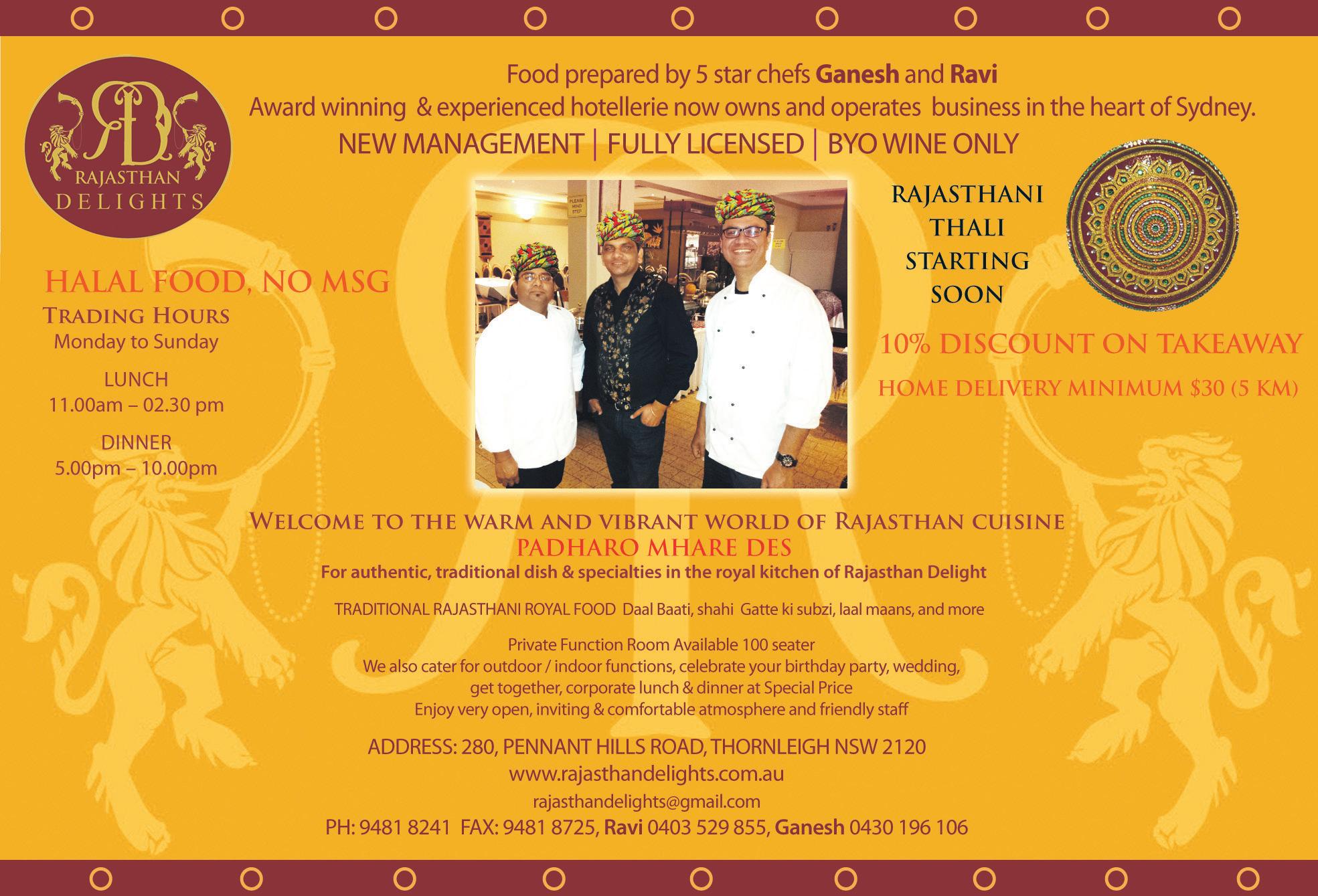

FEBRUARY (2) 2013 15 NATIONAL EDITION
Ancient dance-form brings epics alive

round in circles, all set to a rhythm. Deservedly so, it is the incident that resulted in the war between Rama and Ravana.
As I watched this enactment by the actors of the Yakshagana Kendra organised by Natyanjali, I joined the audience in thinking, “What an art form!”
The famed Yakshagana Kendra troupe from Udupi Karnataka performed two prasangas (acts) at the Redgum Centre in Sydney on Feb 10.

Yakshagana is a unique contribution of the Dakshina Kannada district of Karnataka state and dates back to 1300AD. Colour, costumes, music, drums (chande and maddale), dance and dialogue form its ingredients. Traditionally, they are all-night performances. Today it is highly improvised; lights and microphones are used, and it is performed internationally as well. The episodes are still from our epics.
The acts chosen for the performance were Jatayu Moksha (from Ramayana) and Nala Karkotaka (from Mahabharata). From the very start the audience was kept spellbound by the reverberating voice of Satish Kedalaya. What a range of pitch! What clarity in diction!
themselves. This, of course, they did admirably. What resulted was a well-orchestrated ballet.
We all know the Ramayana. The Jatayu Moksha was an enactment of the key incidents that led to Jatayu (the bird) being hurt by Ravana. Enacted to the background of a full force of music, Surpanakha’s plotting, her encounter with Rama and Lakshmana, the meeting between her and Ravana, the disguised Ravana’s meeting with Sita and her capture, and the fight between Ravana and Jatayu, were all ably presented.
On stage, Surpanakha, the stirrer of Ramayana after Kaikeyi, makes advances towards Rama in the forest. However Rama is committed to Sita, and tricks her by suggesting that Lakshmana may be an appropriate choice for her. With an arrow he writes a message on her back and sends Surpanakha to his brother, who at once follows
Rama’s instruction to cut her nose off. The moment the nose is cut off, the music heightens, the pitch rises, the sound beats all barriers and a shiver runs through the audience. An exotic dance in anger by Surpanakha follows. At first we are attracted by the highly colourful and vivid costumes worn by the cast, then there is the dance with the characters going
Those that know Kannada were twice blessed. They could fully understand what he was singing, apart from appreciating his music. Of course, for the others, dance conveyed the message. Taking into account the international audience’s inability to follow the language, the director had dropped the dialogue altogether. It was left for music and dance to speak for
Sita’s plea with Rama not to leave her alone (Raghavane enna bittu pogadirayya), the soliloquy of Surpanakha and her dance mimicking an elephant were a treat. The episode when Mareecha arrives in disguise as a deer and attracts Sita was a pleasure to watch. The words uttered by Mareecha as he dies, “Ha Lakshmana, Ha Sita” echoed all over the auditorium. Lakshmana’s plea to Sita that what she heard was not the voice of Rama, but of someone else, was moving. At the climax was the fight between Jatayu and Ravana. The actors did a very good job of expressing emotions through gesturesRavana’s anger, the shamed Surpanakha’s plight and Sita’s agony, among others.
The Nala Karkotaka episode is a tribute to the Mahabharata, and is a moving story. Nala is a handsome king with a lovely queen, Damayanti. Shani decides to take revenge upon him and induces another king Pushkara to play dice with Nala. As can be imagined, Nala loses his kingdom and all his
Soumya’s vocal arangetram
Soumya Ravi Kumar was a picture of confidence as she prepared to present her Carnatic music vocal arangetram (debut). And when she began to sing, she showed off beautifully her pleasing voice and its impressive range.
Soumya, a Year 11 student at the Hurlstone Agricultural High School, has been training under the guidance of Lakshmi Narendra, a well known Carnatic guru in Sydney, for more than twelve years now. The arrengetram took place at the Casula Powerhouse Art Centre in mid February, to a packed audience.

The debut was shaped like a regular concert and had sixteen items. It started with a Varnam in Mohana raga and concluded with the popular mangalam. The second
item Vatapi was delivered with chitte swara as well as kalpana swaras and was a delight. In the ever popular item Nagumomu Soumya showed that her voice is well trained in the line Jagamele paramatma evareeli morelidudu, bringing out the despair it predicts. There was a good flow in sarasi janabha sodari. Another popular hit Endaro mahanu bhavulu went a bit hurried. Vasudevayani had an alapana as well and proved somewhat lacking. But Soumya was able to render the swara prastara well for the lines Raga thana gathulanu. The post intermission session saw a Soumya very much at ease. Swagatham Krishna was relaxed while Adivo alladivo showed her vocal ability towards the end. Thillana was effortless and brisk while Kurai ondrum illai brought out the bhava well. Bho shiva shambho
was full of life. There were other pleasing items as well.
Soumya was accompanied by Ammula Sathyavathi, the well known and well travelled violinist from India and also Soumya’s guru’s mother. A crafty accompaniment was evident.
Popular Sydney sider Janakan gave the mridanga support while Crissan Segaram was on the ghatam. In the post intermission segment Soumya’s younger brother Suraj Ravikumar accompanied her on the tabla. The combination of Janakan and Segaram was very entertaining. They brought out a nice taniavartanam after Vasudevayeini.
It was a very enjoyable and memorable evening; congratulations to Soumya.
Sydney Srinivas
possessions. He is driven away to a forest along with his wife. The grief-stricken king leaves his wife fast asleep in the forest and then comes across Karkotaka, a snake, which bites him. Consequently his body itself changes in shape and he becomes a dwarf. The meetings between Shani and the kings were enacted very well. The climax was the game of dice (ADidaru, pagaDe ADidaru). The scene where Nala reports his defeat and his wife volunteers to join him in his banishment to the forest was another highlight. The audience felt for Damayanti when she found out that her husband had gone away. “Ramana, Ramana!” melted the hearts of the audience. Another good soliloquy, this time from Nala, followed.
It was a jolting experience. At the peak of any scene, there was great acting, appropriate music rendered effectively, the drums made the experience intense, colour and costumes added to it.
The actors performing were Krishna Murthy Urala, Mugwa Ganesha, Umesh Poojari, Parthisha Katpady, Manjunatha, Prasada, Sanjeeva Suvarna and Ganesh. Music was rendered by Satish Kedalaya, accompanied by Devadasa Rao on maddale and Krishna Murthy Bhatt on chande Prof Krishna Bhatta is the director of Yakshagana Kendra and was present on the occasion.
In the intermission, students of Thrayee (with Gayatri Krishna Murthy as the Guru) and Samskriti (with Hamsa Venkat as the Guru) schools performed impressive dance items.
Sydney Srinivas
16 FEBRUARY (2) 2013 www.indianlink.com.au
S TAg E
A Yakshagana troupe from Karnataka mesmerises audiences in Sydney
The bitter sweet experience that is migration
An Indian-themed play at this year’s Short + Sweet festival holds universal appeal for migrants
disaster, Vikram is reluctant to relive his anguish when Roopa encourages him to unburden his pain.
BY PREETI THADANI
Leaving one’s birthplace to make another country home is a multi faceted experience. The sadness of bidding goodbye to loved ones is coupled with the challenge of navigating and embracing life in an unknown place which promises excitement and new opportunities.
One such story touched a chord with the audience at the recent Short + Sweet Theatre Festival held at King Street Theatre, Newtown.
The ten-minute short play Roopa’s Goal was written by Carol Dance, directed by Lenore Robertson and starred Neel Banerjee and Pragati Bhatia. It is a dialogue between a young Indian woman Roopa and her father-in-law Vikram. Roopa dreams of moving to Australia, but her father-in-law Vikram wants her to help him run their family guesthouse in India. Having lived in London during his younger years, Vikram acutely felt the pangs of leaving his family behind as he struggled to carve a new life in a foreign land. He faced hardships that were insurmountable and ultimately returned to India where his roots lay. His years of experience have taught him that home is where the heart is and Vikram’s heart lies in India. He reminds Roopa that she too belongs at home and that the golden soil of Australia may promise dreams of a better life but in the end all she will find is alienation and despair.


Vikram’s arguments stem from experience and wisdom but the free spirited Roopa wants adventure and excitement. Vikram wants grandchildren and Roopa wants a western lifestyle. Conflict is pivotal to this relationship, and this intensifies when the generation gap is juxtaposed with the extended family system. It is a battle of wits - old vs new, tradition vs progress. Just as the audience are drawn into Vikram and Roopa’s world the story takes a turn as Vikram reveals his deepest and darkest fears. Having repressed the pain of losing his wife and daughters in the Bhopal
Roopa’s Goal left the audience wanting more, pondering on questions that remained unanswered. Is Vikram averse to Roopa’s ambitions because he now clings to the only family he has, his son and daughter-inlaw? Can Vikram fully reconcile his loss after all these years? Is Roopa motivated by altruistic notions to help Vikram grieve the loss of his wife and daughters thereby helping him move on? Or is Roopa pushing Vikram to recall the past opening up old wounds only to manipulate him into accepting her arguments for migration to Australia in his vulnerable state? Is the bitter sweet pain of migration, leaving behind your culture and loved ones at home, for a land that promises new opportunities, worth it in the end? The themes of Roopa’s Goal held a universal appeal to all migrants.
Neel Banerjee played the role of Vikram remarkably, his performance powerful and his characterisation of Vikram moving the audience. Pragati Bhatia brought Roopa to life with her effervescent streak. The lighting was vital to the evocation of the mood especially the conflict as it built to a crescendo and enhanced the audience’s experience.
Carol Dance has written with much wisdom and insight. Her own migration from USA provided the inspiration for some of her writings. Her travels to India sowed the seeds for a full length play titled Indian Embrace which captures the disenfranchisement felt by migrants. It is about an Australian family who migrate to India: as their lives intertwine with those of a local Indian family, they realise that while they are from different cultures they are bonded in a common human experience. Carol’s writing about the Indian ethos is discerning and perceptive. In addition to having two of her full length plays produced, Carol is also a talented painter. Her paintings, in which modern interpretations are applied to ancient figures, expose the similarities between cultures and show the continuity between the
past and the present.
Director Lenore Robertson too has a particular passion for working with cross cultural themes. A highlight for her in this project was “gaining experience of Indian culture through the in-depth and authentic characterization that Neel and Pragati brought to their roles. Both are proud of their Indian heritage, but presented different aspects of migration: Neel migrated to Australia 10 years back to pursue post graduate studies, whereas Pragati grew up in Australia yet identifies strongly with her Indian background”. Having directed Roopa’s Goal, Lenore now looks forward to travelling to India and experiencing the culture and people first hand.
Neel Banerjee, an acclaimed thespian, writer, producer and director, has been actively involved within the Australian-Indian theatre scene since 2003. He has formal training in both analytical and physical theatre, Tagore Song, Tabla, Indian folk instruments and Chhau Dance and has performed interstate and overseas. Neel’s last theatrical production was Bisarjan…the sacrifice. His theatre ambitions lie in the subject matter engaging
abstract pleasure and spirituality. He founded Nautanki Theatre (www.nautanki.org.au) a registered incorporated organisation which provides a valuable platform for cross cultural exchange between the Indian subcontinent and Australia through theatre shows and drama workshops. Nautanki Theatre’s productions maintain authenticity by showcasing relevant societal issues highlighting the dynamic and evolving culture that has become a trademark of Australia.
Pragati Bhatia has been working in theatre, film and television over the past decade. She relocated from Melbourne to follow her acting aspirations. Her most recent theatre credits include Crossed (La Mama Melbourne) and The Visit (NIDA Melbourne). Pragati has also choreographed Bollywood performances and recently did a reading for Delhi Daughters with the Abhinay School of Performing Arts.
Short + Sweet, the largest festival of ten-minute theatre in the world, features over 150 of the best ten-minute plays from local and international writers each year.
Conceived in Sydney over a decade ago, it has now gained international recognition, travelling to many countries including India.
FEBRUARY (2) 2013 17 NATIONAL EDITION
S TAg E
Is leaving behind your culture and loved ones at home, for a land that promises new opportunities, worth it in the end?
Neel Banerjee and Pragati Bhatia in Roopa’s Goal
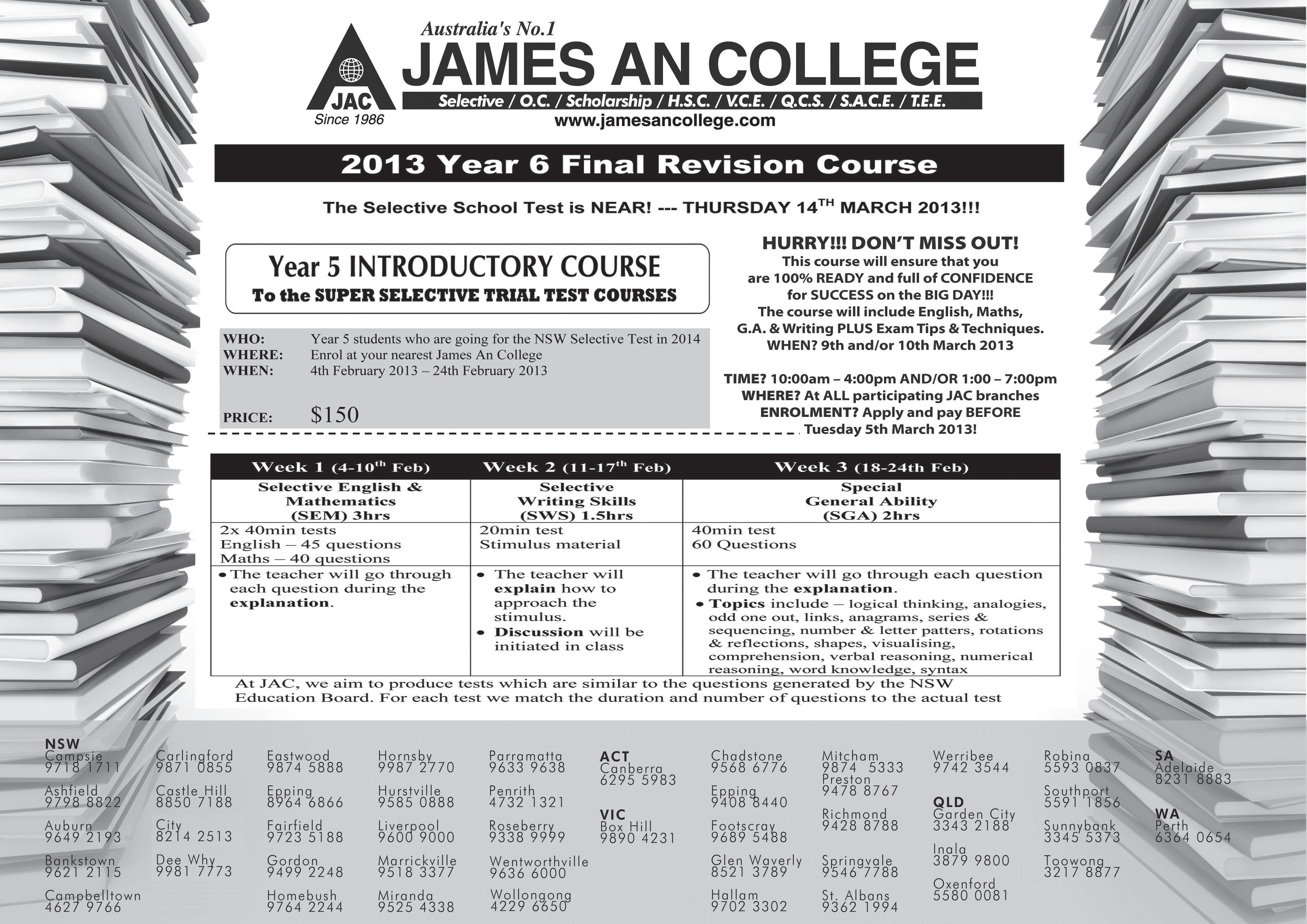

18 FEBRUARY (2) 2013 www.indianlink.com.au
Masala chai, anyone?
There’s a touch of Bollywood at this year’s Mardi Gras Festival
BY PRIYANKA TATER
It is a grand overdose of the Indian stereotype.
The Last Chai, a ‘Bollywood’ production, has been adding loads of spice to the Sydney Mardi Gras Festival this year.

Presented by Trikone Australasia, a not-for-profit support organisation for the local South Asian GBLTQ community, the play moves away from the usual stories of ‘coming-out’ angst (so last decade!), and dives straight into a Bollywood farce. With a masala mix comprising song and dance routines, high voltage drama, comedy, romance, and almost every emotion under the sun, The Last Chai is an out-andout entertainer.
“Yes, the stereotyping was intentional,” reveals Nigel Balm, director of the play. “We wanted an over-the-top comedy and sometimes stereotyping helps to bring that in very, very quickly”.
Having watched the play in a nearly full theatre with plenty of laughter to be heard, yours truly certainly has no qualms paying testament to these remarks by the director.
But don’t expect the same old mundane boy-meets-girl love story like any other Bollywood potboiler. There’s a twist in the tale.
Amir is a Sydney-based actor wanting to make it big in the ‘filmy’ world, married to a typical Indian housewife Ragini. While Ragini is getting a bit too much attention from a female neighbor, Suzy aka Sushmita, Amir has got his share of secrets to deal with: you see, not only is starlet Meera attracted to him, he’s a closeted gay. And as the three women (the wife, the neighbour and the actress) discover this, a murder is plotted….

The flamboyant Mr. Chaps keeps us entertained with his histrionics while starlet Meera with her Bollywood ‘andaaz’ gets into the skin of her character. There’s plenty of opportunity for cheesy dialogues, slapstick humour, bursts of colour and a generous dose of Bollywood chartbusters.
Trikone Australasia has previously presented sell-out shows such as In The Space Between (Mardi Gras 2011) and Bollywood Queen of the Night (August


2012). Its latest, The Last Chai, is conceived and produced in Sydney, and performed by a local cast.

And talking about the cast, the director has a point to make.
“Mr Chaps (played by Kunal Mirchandani) wrote the script, so it is very home grown,” he reiterates. “The cast have developed the play themselves with their inputs and they are learning the craft of putting something on”. Thanks to the cast for taking the effort to make it ‘home-grown’ and keeping that intrinsic Indian flavour alive with the authentic Indian accents and costumes!
The germ started to grow in Binu Raghaven’s head almost a year ago when he along with his partner, Nigel Balm (director of the play) went to see a Joe Orton play. That’s when he decided to write a farcical murder story revolving around Indian characters. Binu plays the lead character Amir. Does the team have any plans of getting onto reel?
Nigel replies, “It is in our minds, yes; we would perhaps try to do a short film. It would be fun to come up with something and see what our version of Bollywood is. This is a hybrid. We haven’t found anyone who has taken a typical western play and combined it with Bollywood music. So we are actually developing a genre and we’re going to have to find a new word for that”.
Well, whatever that word is, it certainly is destined to garner lots of interest and appreciation. Here’s wishing the cast and crew of The Last Chai keep brewing!
FEBRUARY (2) 2013 19 NATIONAL EDITION
“Yes, the stereotyping was intentional,” reveals Nigel Balm, director of the play. “We wanted an overthe-top comedy and sometimes stereotyping helps to bring that in very, very quickly”
S TAg E
Strike! Dance! Rise!
One Billion Rising is a unique form of protest against violence towards women
One evening in a corner of Sydney’s Prince Alfred Park, a group of people gather together to dance, while cyclists whizz past.
In another part of the city, in front of Parramatta Town Hall, a group of family and friends carry placards and dance in the rain.
A crowd of over 2000 people gather at Federation Square in Melbourne to dance and protest.
This is ‘One Billion Rising’, people gathering together to register their protest against violence towards women, through dance.
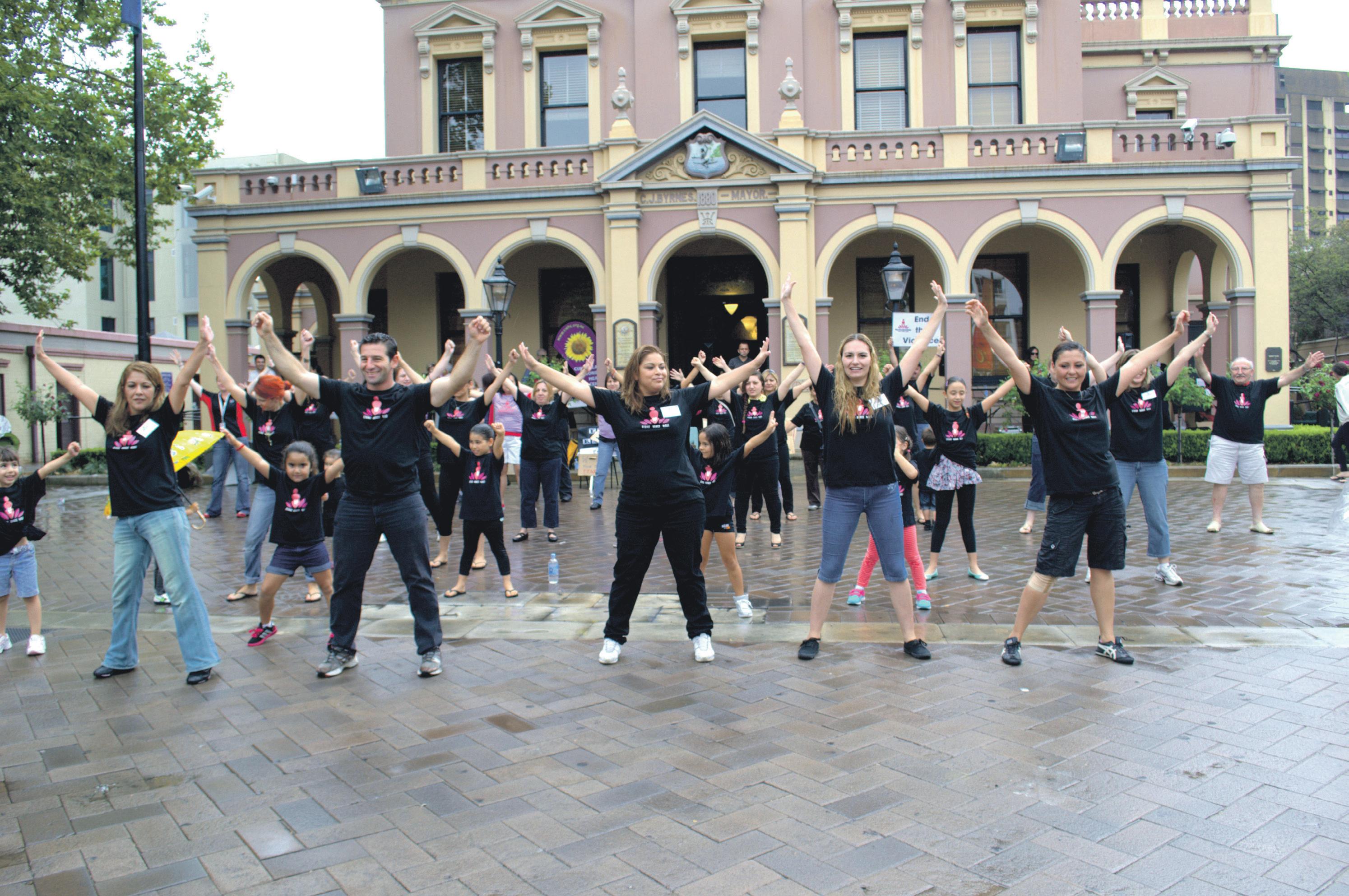
Through the day on February 14 and the weekend after, people from various walks of life across Australia joined together in a show of solidarity for this unique concept.
Brainchild of Eve Ensler, activist and writer, creator of the Vagina Monologues, One Billion Rising is a global campaign to end violence against women. The idea was mooted to commemorate the 15th anniversary of V-Day, a non-profit organisation set up by Ensler. Spurred by statistics that on average one in three women will be raped or beaten during their lifetimes which equals roughly a billion women, the movement quickly gathered support worldwide. People all
over the world gathered together in groups to dance and protest on February 14, dancing to the same music, Break The Chain, an inspiring song written and composed by Tena Clark and choreographed by Debbie Allen.
With over 200 countries participating, the 2013 Rising was truly global. Eve Ensler led the rising in Congo; in India, people took to the streets in Mumbai and Delhi, and in Australia, Byron Bay was one of the first places to Rise in the morning, on the beach. And there were gatherings all over Australia, in the large cities and in the small towns.
Many of the organisers of the risings in different places are ordinary women, working professionals who poured in an extraordinary amount of time and energy into this initiative, because they felt they could not just ignore so much violence.
Nihan Nercey, organiser of one such event in Parramatta in Sydney is a primary school teacher who says she was inspired after she saw a YouTube video of a woman being abused. After hearing about Eve Ensler and One Billion Rising, Nihan decided to do something about it. She spent the last three months getting the Rising into shape, along with four others. “There has been no family time, and my husband says he hasn’t been able to see me,” she said with a laugh.

All these women have different reasons for participating. Claire, a part of the three-member team that put together a Rising in
Sydney’s Prince Alfred Park, said, “It was the statistics that got me! One billion women experiencing violence is just a billion too many, and I couldn’t just sit back and do nothing.”
In Australia, domestic violence is a big issue and Claire added, “I don’t know how it is in other countries, but here people usually keep silent about it.”
She sees this as a place to start a conversation about these problems. “I think it is important to keep the conversation going forward,” she added.
And people participated because they saw it as a way to take a stand against violence. In Parramatta, little children held placards and grandmothers held babies. In Prince Alfred Park, there were dancing men in suits and drumming women. And everywhere there were people from different walks of life who came to protest against something horrifying. There were women who had been victims of abuse, and along with them mothers, sisters, friends and brothers. And they all came together to dance with joy.
Tamar Spatz, one of the organisers of the Melbourne Rising, talked about dancing as a form of protest. “Dancing is a way for women to take control of their own bodies,” she said. “And doing it visibly was very important. Women’s bodies have become objects of sexualisation and of criticism, and this is the way to take back ownership. It is a powerful feeling, to feel ownership
of our bodies. And the sight of so many people dancing together was electrifying. It brought everybody together for a common cause”.
All the organisers acknowledged the power of social media in bringing people together and creating publicity for the movement. Despite coverage in mainstream media being limited, the response from sites such as Facebook and Twitter was overwhelming.
“Social media (Facebook and Twitter) has been awesome,” said Tamar. The rising in Melbourne which saw over 2000 people attend was started by Tamar, also a primary school teacher and former social worker. When she heard Eve Ensler calling for people to start a Rising back in October 2012, she decided to join in. Tamar realised that no one had started an event in Melbourne, so she decided to do it along with a friend. “From there it just grew and grew,” she stated. Joining hands with a few women’s groups helped the event grow bigger, with a larger vision.
Once the dancing was over, the sense of achievement and well-being was palpable. Dancing brought everyone together as a group and had a very positive effect. As one participant said breathlessly, “The world as we know it is going to change!” And a group of dancing women are leading the way! Visit www.onebillionrising.org to find out more about One Billion Rising and to watch global Risings
Eve Ensler led the rising in Congo; in India, people took to the streets in Mumbai and Delhi, and in Australia, Byron Bay was one of the first places to Rise in the morning, on the beach
“Dancing is a way for women to take control of their own bodies. And doing it visibly was very important. Women’s bodies have become objects of sexualisation and of criticism, and this is the way to take back ownership”.
Tamar Spatz
20 FEBRUARY (2) 2013 www.indianlink.com.au
m AI n STREA m
CHIDAMBARANATHAN
Above: A One Billion Rising event at Parramatta


FEBRUARY (2) 2013 21 NATIONAL EDITION


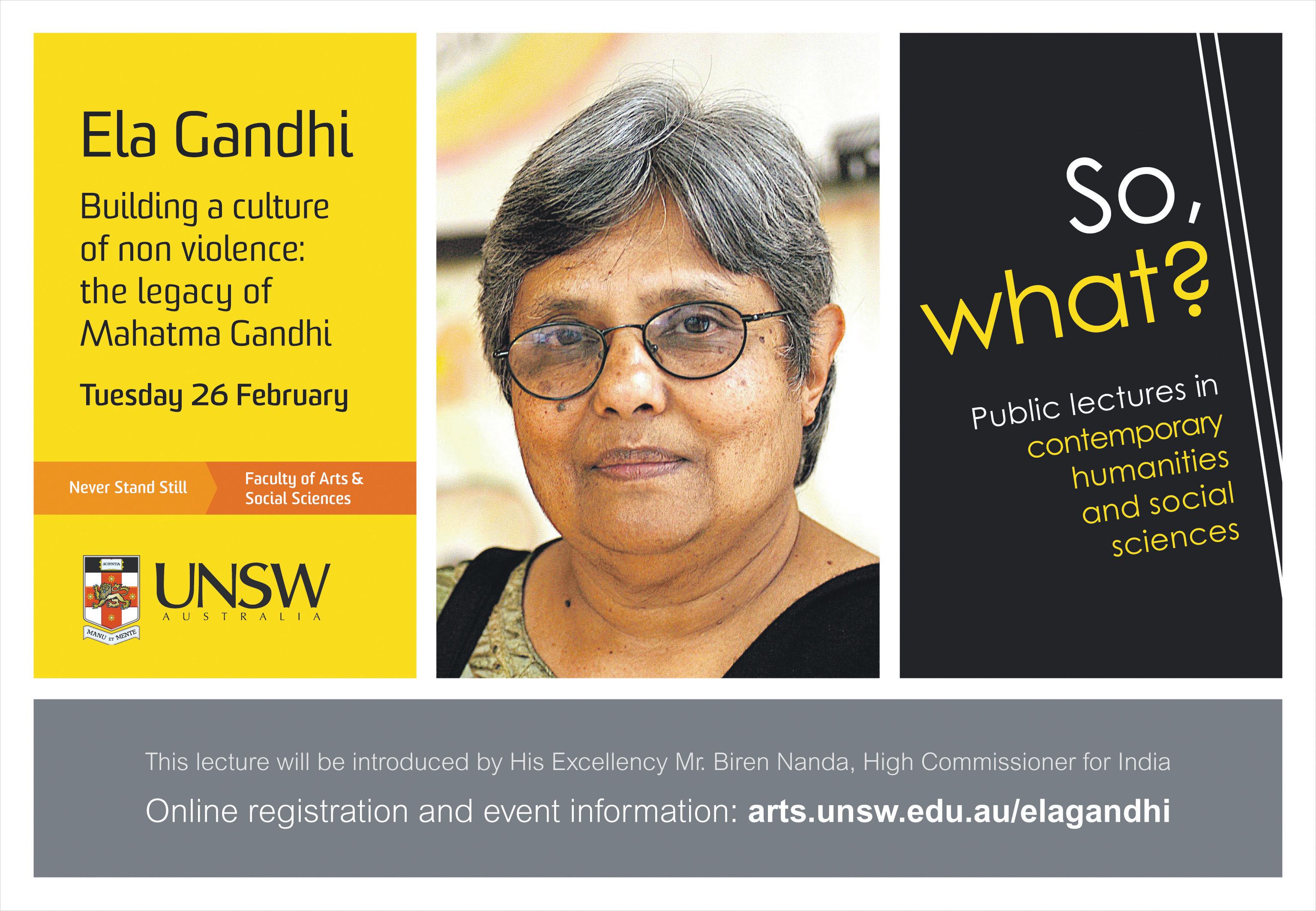
22 FEBRUARY (2) 2013 www.indianlink.com.au 09 8774 6160 Hallam Wantirna 03 9800 3988
An officer and a gentleman
Working for the Victorian Police Force has been an interesting and rewarding experience for Ash Dixit
 BY PREETI JABBAL
BY PREETI JABBAL
‘Do you have what it takes?’ This slogan printed on a plastic bag was to change the life of Indian business student Ash Dixit forever. Ash, who was struggling to find a job despite completing a Masters Degree in Business Management from RMIT University, was about to pack his bags and head back to India when a chance sighting of this recruitment ad by Victoria Police altered the course of his life.
“My housemate went to the Police Museum and returned with a bag that said Join Victoria Police Now. I read it and thought to myself, why not? I have always wanted to be a cop, so let me give them a call. That was the start of my policing career,” said Ash Dixit as he shared his story with Indian Link
He found out that unlike India, candidates over the age of 28 were allowed to join the police force in Victoria and he decided to apply.
“My application went through successfully and I was called in for selection much to my delight and my parents’ dismay. Being typical Indian parents they took a while to reconcile to the fact that I was about to give up a potential ‘business’ career and become a cop instead,” continued Ash.
“Many friends tried to dissuade me, however I was determined. There was one major hitch, though. I did not know how to swim and that was a pre-requisite for this role. I took 10 months to learn how to swim and it wasn’t easy. The physical was tough but I managed to pass the swimming test and was pleasantly surprised to see that I wasn’t the last one out of the pool, there were three others behind me,” he said with a laugh, reminiscing about his early days in 2003 when he became one of the first few Indians to join the Victorian Police Force.
Ash arrived in Melbourne from Nasik in India in 1999, as a business student. On completion of his course he applied for a permanent residency. His story resembles that of many migrants who go through the initial struggle to find a job and to assimilate in a new environment. Ash’s choice of vocation however, was quite unusual as he joined a police force that was predominantly Caucasian at that time.
“Initially people were quite surprised to see a non-Caucasian
like me when I went on my beat; however over time I noticed that they felt more comfortable in approaching me, especially those who belonged to multicultural backgrounds,” claimed Ash. “Many ethnic communities have different perceptions of the police based on their experience in their own countries. For example, in India people generally hesitate to report a crime as the policemen in India are considered to be unapproachable, corrupt or ineffective. They carry that perception/experience with them when they migrate and are reluctant to have anything to do with cops even if they are the victims. They are also unaware of their rights. My job is to change that mindset,” he explained.
Senior Constable Ash Dixit is currently the Community Liaison Officer for Maribyrnong Police Station. He works with people from a wide variety of personal backgrounds, interests, academic fields of study, hobbies, belief systems and personalities. In June

2010, Ash joined former Victorian Police Commissioner Simon Overland in addressing members of the Indian media about Victoria Police’s drive to attract a more diverse range of police recruits to reflect the multiculturalism of Victoria. The appeal was a way to create greater trust and understanding with the community. Continuing this tradition of fostering community relationships, Ash recently helped to establish the Maribyrnong African Youth Advancement Committee. This initiative is to guide young African people to procure jobs, traineeships or voluntary work, with a view to gaining employment. “As a migrant I can relate to these newcomers and understand the difficulties that they face in starting afresh in a new country,” said Ash.
Ash expressed his concern over the increase in incidents involving people from Indian/migrant background in Melbourne, and said that there is a tendency to underreport victims of domestic violence within our community.
“I am keen to liaise with the Indian community to make them aware of their rights, to inform them about services that are available to them and to assure them that Victorian Police is very approachable,” he said. “I want the community to know that we are here to help”.
Ash’s advice to people from the community who are interested in a policing career, is to spend a couple of years in Australia before considering joining the force. According to him it is important to be familiar with the language, culture and lifestyle of the community and have some local work experience before joining the police.
“I have really enjoyed my job as cop for nearly 10 years and would recommend policing as a career to anyone. In particular, I would encourage those from minority communities to join as it is critical that we, as a service, are reflective and representative of the entire community,” said Ash in conclusion.
Initially people were quite surprised to see a non-Caucasian like me when I went on my beat; however over time I noticed that they felt more comfortable in approaching me, especially those who belonged to multicultural backgrounds
I would recommend policing as a career to anyone. In particular, I would encourage those from minority communities to join as it is critical that we, as a service, are reflective and representative of the entire community
FEBRUARY (2) 2013 23 NATIONAL EDITION people
Ash Dixit, Senior Constable
Photo: Ravinder Singh Jabbal
VVIP choppers, civil n-deal figure in ManmohanCameron talk
India voiced its “very serious concerns” over the bribery allegations in the AgustaWestland VVIP choppers deal during talks between British Prime Minister David Cameron and Prime Minister Manmohan Singh as Britain assured it would act on any request for information.
Both countries also agreed to launch negotiations on a civil nuclear agreement and cooperate in energy security and boost trade as Cameron and Manmohan Singh held wide-ranging talks on a wide gamut of regional and global issues, including Afghanistan.
Cameron, who is in India on a threeday visit at the head of the biggest-ever 100-member delegation, and Manmohan Singh held talks after which the two released a joint statement outlining their areas of cooperation, including a MoU on health.
Cameron said his country would respond to any request for information on the AgustaWestland issue. He said the Italian authorities were looking into the issue in detail as Finmeccanica, the parent company of AgustaWestland, is Rome-based.
He asserted that Britain has tough antibribery laws and any one found guilty of corruption would be punished.
Manmohan Singh conveyed India’s “very serious concerns regarding allegations about “unethical means” used in securing the $750 million contract for AgustaWestland helicopters.
“I told him that we have sought an explanation from the company by Feb 22 to examine if the contractual provisions on unethical practices and the Integrity Pact have been violated. I have sought full assistance from the UK in this case. Prime Minister Cameron has assured me of the cooperation of his government in the investigations,” the prime minister said.
Manmohan Singh thanked Cameron for Britain’s support for India’s full membership of the Nuclear Suppliers Group and other multilateral export control regimes.
“We have also decided to commence negotiations on a bilateral Civil Nuclear Agreement,” he said.
Cameron also “committed the UK to make available to India cutting edge British technology, civil and military, that the Britain currently shares with its top international partners, in accordance with international obligations”.
Both agreed to work together to achieve India’s ambitions to join the major export control regimes (Nuclear Suppliers Group, Missile Technology Control Group; Australia Group; Wassenaar Arrangement).
The India-EU Free Trade Agreement also figured in talks, with both sides underlining their strong commitment to its successful outcome.
Cameron emphasized that their bilateral relations has “all the potential of growth” in the decades ahead.

“It is a strong partnership that we want to build together.. we are on track to double our trade to 23 billion pounds by 2015,” he said, and added that Britain is looking to open British trade offices all over India.
“We want to open a pan India network of British trade offices by 2017.”
Cameron also said he was “excited to examine” business prospects around the Bangalore-Mumbai industrial corridor. He made a pitch to help build the 1,000-km Mumbai-Bangalore industrial corridor generating investment projects worth up to $25 billion.
He also elaborated on the steps Britain is taking to boost trade, including reducing barriers to investment. Britain is bringing in same-day visa service and re-writing rules of sharing technology.
Both sides have a new collaboration on cyber security and agreed to cooperate in
energy security.
They also agreed to further intensify cooperation in fighting terrorism.
Cameron said they had emphasized on the need for a “stable and secure Pakistan, which is at peace with itself and its neighbours and has eradicated the threat that terrorism poses.. and that must include to bring to justice the perpetrators of the 26/11 attacks.. and we will work together to that end”.
Afghanistan also figured in the talks, with Britain saying that “it will not abandon Afghanistan” and will continue to support Kabul even after the troops have left in 2014.
Britain will work to bring long term economic security and development to Afghanistan to prevent it becoming a haven for terrorists, he said.
They also discussed Sri Lanka and the need for “free and fair elections” in Maldives, where the former president Mohamed Nasheed has been staying in the Indian High Commission in Male since Feb 13.
Indian comic book industry: Big-bucks mantra
The Indian comic book industry is laughing all the way to the bank. Modern storytelling, broadening readership to include young adults besides children, diversification into areas like graphic books, mobile apps and merchandise, has enabled the Rs.100 crore ($22 million) comic industry to reach out and captivate newer audiences with an eclectic assortment of products.
According to industry experts, it was the need of the hour to change and modernise content of their publications to cater to the children of the new millennium.
“The content has changed over the years and keeping with the times the characters have changed and so has the storytelling,” Manas Mohan, chief operating officer of
one of India’s oldest publications, Amar Chitra Katha, said.
“The contemporary content has helped us to retain our young readers in the metros and mini metros while we have successfully percolated into tier-II and tier-III cities as well,” he added.
The transformation was evident, going by the success of the just-concluded Comic Con India (CCI) at Dilli Haat and a huge turnout of children and young adults alike. Be it Batman, Fred Flintstone or Chacha Chowdhary, the three-day annual event saw over 80 participants and several interactive sessions and talks by renowned artists.
According to CCI founder Jatin Varma, the focus has shifted to young adults as comics today are not just limited to kids.
“I believe that lovers of comics and cartoons can be found in any age group, but most of the comic books, graphic novels and games at the CCI were for young adults,” Varma said.
Ashok Namdeo of Campfire Graphic Novels agreed, saying graphic novels have played a major role in luring young adults to start reading.
“The dark and mature themes, combined with colourful graphical displays, lures the young adults who have started to take a liking to such books,” he said.
According to Varma, there has been a 100 percent rise in the number of publications at CCI over the years and a majority of such books are for young adults. The interest of children and young adults for comics also meant booming business for the event.
According to Varma, they did business of over Rs.1 crore, including sales of all types of reading material and merchandise.
“An estimated 50,000 people visited the convention this time. The revenue last year was Rs. 25 lakh while 15,000 visitors came to the event. It is heartening to see that the interest of people, including young adults, has increased,” Varma added.
“The comic and related industry today is worth around Rs.150 crore and the annual turnover is around two crores,” said Varma.
Introduction of exclusive merchandise in the Indian market has played a major role in keeping the interest alive.
A table lamp shaped as the sabre of Darth Vader, the central character from “Star Wars”, or glasses to cut eye strain from LCD screen glare - the merchandise promises to fulfil fantasies of comic book lovers, gamers and movie buffs alike.
Priced between Rs. 20 and Rs. 800, the usual and cheap products like pouches, wallets, coffee mugs, key chains, mobile and tablet covers based on cartoon characters are an all-time favourite.
However, despite being expensive, equally popular are niche items such as a motorcycle helmet emulating the one worn by Captain America or a replica of Hermoine Granger’s gown she wears in the “Harry Potter” series of films.
Special spectacles by Gunnar Technology Eyewear for gamers who are addicted to “Counter Strike” or “Call of Duty” can be bought for around Rs. 5,000. The price though is not a deterrent.
“If I am buying a state of the art video game for Rs. 25,000, I won’t mind paying another few thousands to have the appropriate eye gear to protect my eyes,” said Anirudh Singh, a hardcore gamer. But that is not all.
24 FEBRUARY (2) 2013 www.indianlink.com.au INDIAN N e WS
Photo: AP
British Prime Minister David Cameron and Bollywood actor Aamir Khan interact with students at the Janki Devi Memorial College in New Delhi on February 19, 2013.
A lot of content creators also showcased their comics as apps for popular smartphones and tablets at the event. Amar Chitra Katha led the pack with all their titles available as apps for iPad.
“It has never been so good before. Not only do we get to buy our favourite comics but also the merchandise too... It was not so a few years back. It gives us more choice,” Sidharath Singh, a 12-year-old, who apart from comics buys merchandise of his favourite character Darth Vader.
“The apps help us to cater to our techsavvy readers in metros,” Amar Chitra Katha’s Mohan told reporters.

Hockey World League: Indian eves beat Malaysia 3-0
India notched up its second consecutive win in the women’s Hero Hockey World League Round 2 beating Malaysia 3-0 in an evenly contested match at the Major Dhyan Chand National Stadium in Delhi.
Vandana Katariaa (9th, 38th) struck in both the halves and Rani Rampal (65th) completed the scoreline with five minutes left for the hooter as India took its tally to six points from two matches.
The top two teams from round two will qualify for the semifinal. The World League is a qualifying tournament for the 2014 World Cup in Hague.
For World No.12 India, who thrashed Kazakhstan 8-0 in the first match, it wasn’t easy going against the Malaysians, who are 22nd in the FIH rankings.
The Indian defence had to withstand the pressure of quick Malaysian attacks on more than one occasion. The Malaysian are a fit and agile outfit but it was lack of experience and poor finishing that did them in.
Malaysia had two clear chances from which they should have scored. Once center-half Nor Azlin Sumantri just had to beat India goalkeeper Yogita Bali but she shot wide.
India were clinical in their approach but had to fight hard in the first half. They didn’t have many opportunities upfront in the first half but made the most of the one that came their way. In the second half they stepped up the tempo as the Malaysians ran out of steam.
Though it was the Malaysians, who earned the first penalty corner as early as in the second minute, it were the Indians who drew first blood. The Malaysians fought hard to find the equalizer but the Indian defence looked determined.
India coach Neil Hawgood said he was happy to get three points but was not impressed with the performance of his girls.
“Happy that we got three points but I am very disappointed with the performance of the team. Winning today was important but still a lot of work needs to be done in the team,” he said.
Hawgood said it was the one of worst performance by the team since he took over in July.
“This was one of the worst performance I have seen since I took over. But even with their worst performance they can win 3-0, I think they can do much better when they play well,” the Australian said.
Wasn’t sure I could pull off Osama’s role: Ricky Sekhon
Hitting big time with his first film, Indianorigin actor Ricky Sekhon, who plays Osama bin Laden in Kathryn Bigelow’s Oscar-nominated Zero Dark Thirty, says he loved the challenge but wasn’t sure whether he could pull it off.
“I wasn’t sure if I could pull it off. I didn’t have an agent looking after me or a team around me to help prepare for the part. I hadn’t seen the script. And I was definitely not ‘Bin Laden skinny’.
“But how does one play the global face of evil? For any actor this would have the best challenge and I loved the challenge, so there was no second thought,” Ricky told IANS in an email interview from London.
Ricky belongs to a Sikh family in Punjab but was born and brought up in Southall, West London. He graduated in Drama and Theatre studies from the University of London.
Zero Dark Thirty chronicles the decadelong hunt for Al Qaeda leader Osama after the September 2001 attacks and his death at the hands of the Navy SEAL Team 6 in Abbotabad, Pakistan, in May 2011.
When the 29-year-old auditioned for the role, he didn’t know it would be for the role of Osama bin Laden, who was in his late 50s when he was killed.
“The whole story of Zero Dark Thirty began last year in March. The casting director called me and told me that she had been looking for me for a week. I was asked to come the next day. When I was auditioning for the movie, I knew very little of what my role was. I mean, I just knew that it was the role of a terrorist,” said Ricky.
“Later I got a call confirming my role in the movie. I was playing the world’s most notorious terrorist and I was made to sign a bond that I would not leak what I was playing. I just told my mom, dad and my girlfriend because they would see me doing weird things while I prepared for the role,” he added.
From seeing YouTube footage on the notorious criminal to reading books and losing weight, he did it all to look like Osama.
“To prepare myself for the task, my friend Tara, who works for the Institute of Ismaili Studies, gave me a list of books to read about Bin Laden and Al Qaeda. I bought a set of Rosetta Stone CDs to learn some basic Arabic,” said the actor.
“I did not have anything more than the footage available on YouTube. The journalistic inputs definitely helped me to prepare myself for the role. I had to shed a lot of weight for the movie.
“In movies, image is everything and I was playing a very ill man. While on vacation in Jamaica, my friend Henry, a personal trainer, had me running up hills in the morning heat and eating only eggs, lean meat and fish,” he added.
Though he has been in London since childhood, Ricky always enjoyed visiting his hometown in Punjab.
“I come from a Sikh family, born and raised in London. I have been to Punjab which is our hometown and it is always a pleasure going there. It’s where I can trace my roots and thus feel a sense of belonging with all the exposure to the culture there,” said Ricky.
Asked about future projects, Ricky said: “Zero Dark Thirty is high calibre credit, as a result of which I am getting more film projects. At present I am working on Swedish thriller.”
Indian MIT students’ big idea caught in US visa limbo
An innovative system developed by two Indian post-doctoral mechanical engineers at the Massachusetts Institute of Technology (MIT) to transform the whitehot fracking industry is caught in a US visa limbo, according to a media report.
The system developed by Anurag Bajpayee and Prakash Narayan Govindan offers a cheaper, cleaner way to dispose of the billions of gallons of contaminated water produced by oil and natural gas hydraulic fracturing, or fracking, the Washington Post reported.
It “just might be a breakthrough that creates wealth and jobs in the United States and transforms the white-hot industry,” it said. “That is, as long as the foreign-born inventors aren’t forced to leave the country.”
They, according to the Post, say they are about to close on millions of dollars in financing, and they expect to hire 100 employees in the next couple of years.
Scientific American magazine called the water-decontamination technology developed by Bajpayee one of the top 10 “world-changing ideas” of 2012.
But their student visas expire soon, both before summer, and because of the restrictive US visa system, they may have to move their company to India or another country, the Post said.
Even as Washington is focused on the issue of 11 million undocumented migrants, the influential US daily used the plight of the Indian duo to illustrate the vagaries of “immigration laws that chase away highly skilled foreigners educated in US universities, often with degrees funded by US taxpayers”.
It costs about $250,000 to educate a single PhD student and the US government pays for at least 80 percent of MIT’s graduate research, according to Leon Sandler, executive director of MIT’s Deshpande Centre for Technical Innovation, cited by the Post.
“Essentially we are funding their research, spending a quarter-million dollars in taxpayer money; then we make it hard for these people to stay here,” Sandler was quoted as saying.
His group helps start-ups and provided nearly $150,000 to support Bajpayee and Narayan. “If you want more innovation in this country, fix the visa situation,” he said.
Bajpayee and Narayan want to stay in the United States, according to the Post. They don’t want to move to Chile or Israel or Singapore, which seem too small and too far from their main markets in the US oil and gas fields.
But if they can’t legally stay in the United States, they have other options to consider, they were quoted as saying noting their biggest financial backer is Indian and is pressuring them to build their company at home.
“If it doesn’t happen in the US,” Narayan said, “we will make it happen somewhere else.”
FEBRUARY (2) 2013 25 NATIONAL EDITION Photo: AP INDIAN N e WS
A test trial of a monorail train is conducted in Mumbai, 15 February 2013. The Mumbai monorail is expected to be completed in 2014.
IANS
A Pilb ArA exPerience
Indian artists bring alive their understanding of the people of remote Western Australia at India’s ongoing OzFest cultural festival. ROHANA WOOD reports
On February 8, independent cultural organisation FORM launched its latest exhibition, Pilbara Stories: A new way of knowing the people of the Pilbara. It is the latest exhibition in a series which has seen the works of renowned Indian photographers Bharat Sikka and Ketaki Sheth travel between the remote region in Western Australia’s North West and their home country India.
In October 2012, The Pilbara Project exhibition was part of ‘Oz Fest’, the four-month Australian Cultural Festival in New Delhi. In her opening address at the event, Australian Prime Minister Julia Gillard praised FORM’s participation in the festival. “Tonight, I have the pleasure of opening Oz Fest – my country’s biggest ever cultural festival in your country. We will also feature great works of collaboration between our two peoples… For admirers of physical beauty, The Pilbara Project will display photographs of Australia’s rugged, starkly beautiful northwest region by Australian and Indian photographers….Oz Fest is about bringing Australia’s contemporary character to India in new and fresh ways,” Prime Minister Gillard said.
The Pilbara Project opened at India’s prestigious fine arts institution Lalit Kala Akademi, and was supported by the Australian Government through the Australian Cultural Council, an initiative of the Department of Foreign Affairs and Trade.
The beautiful exhibition represented a deep collaboration between Australian curators and Indian artistic talents which recognised a strong historical and trade relationship of the two different countries.
The important relationship between Western Australia and India is not only at a creative, artistic level. For FORM Curator Monique La Fontaine, it was her first visit to the subcontinent and she found similarities between her home and India.
“There are surprising synchronicities between Australia and India. Both are vast countries with ancient histories and vibrant Indigenous cultures. Both are
comprised of sacred landscapes, which reside at the heart of those cultures, and both know relatively little about the other. The opportunity to reveal a small part of Western Australia’s hidden character through the films and photography of Aboriginal, nonIndigenous and visiting Indian artists in the Pilbara Project provided an exciting platform for cultural exchange, and we were constantly surprised by the reactions that this imagery evoked in Indian viewers,” she said.
While in India, Ms La Fontaine and Sharmila Wood, also a FORM curator, participated in presentations at education institutions and engaged in dialogues about contemporary art. Both curators addressed student, faculty and prominent members of the arts community at Amity University about The Pilbara Project and FORM’s relationship with the region.
They also participated in the Craft Revival Trust series, Putting Ideas First. The series is designed to generate and encourage discussion on intangible cultures, livelihood and policy. Photographs from the Canning Stock Route Project were part of The Pilbara Project on display in India, and resonated with the viewers and the audience.
“Photography and films from the Canning Stock Route Project, for example, which documented Western Australian Aboriginal artists at work on the luminous, multicoloured canvases that depict the sacred stories of their country in the Pilbara and beyond, were compelling for viewers when shown as part of The Pilbara Project exhibition at the Lalit Kala Akademi in New Delhi, and in presentations at the Craft Revival Trust and at Amity and Ambedkar universities,”
Ms La Fontaine said. “In rural Rajasthan, however, amongst the working poor at the Social Work and Research Centre or ‘Barefoot College’, these photos and films of Aboriginal artists and cultural leaders, although equally fascinating for young and old viewers, were instantly less exotic, more mirrored. Almost like a memory of having crossed familiar distances”.
FORM’s latest launch, Pilbara
Stories is a natural extension of the creative relationship fostered between FORM and Indian artists, cultural organisations and education institutions.
Pilbara Stories is part of The Pilbara Project, a FORM initiative which is proudly supported by Principal Partner BHP Billiton. The project focuses on community and encourages people to celebrate the region, their own identity and story through visual arts.
The partnership between BHP Billiton and FORM shares a common goal, to assist and encourage communities to prosper in all areas, whether in health and education or culture and the arts. For nine years BHP Billiton and FORM have worked to invigorate, inspire and empower Pilbara communities through strong cultural programs that allow people to find their own voice. Pilbara Stories has provided an avenue for the community to share their distinctive region, sense of place and cultural identity.
The exhibition is the result of trips undertaken to the region by visiting international photographers from India, The Netherlands and the United Kingdom, and an Australian photographer.
It aims to tell the incredible stories of everyday people living in the town of Port Hedland and its surrounds. Pilbara Stories features over one hundred portraits that reflect the diverse heritages, personal stories and experience of everyday life in the Pilbara, a region that has over fifty two different nationalities.
Bharat Sikka’s works were first showcased as part of FORM’s exhibition at Oz Fest. They will now be launched as part of the Perth installation of Pilbara Stories The respected photographer who studied at the Parson’s School of Design has exhibited across continents and found the Pilbara and its people inspired.
“When I take pictures I try to project the way I see things, and I found the Pilbara to be an extremely interesting space that intrigued me a great deal”, he said. “There were many people who seemed to be searching for something intangible and others who were longing for a new life like the different migrants in the
region, or the old prospectors drive by the desire to find gold”.
For Mr Sikka the journey from New Delhi, a bustling metropolis of some forty million people, to the remote town of Port Headland which has a population of less than twenty thousand, was an eye-opening and unexpected experience.
“Even the popularity and presence of so many Chinese restaurants was something I hadn’t expected,” he said. “I was able to meet a lot of Aboriginal people through Sharmila and I felt an inexplicable connect with them, it was something I’ve never experienced before. Many of the people I met were surprised that I had come all the way from India and in some ways it was very emotional. I felt that this was a place where I could return again and again”.
Much like Bharat Sikka himself, his photographs and documented stories will have travelled from New Delhi to Perth completing the journey that was started in the Pilbara in March 2012.
FORM hopes to continue the relationship with India and foster artistic growth and cultural ties between the two regions.
Right: FORM curator Monique La Fontaine at Lalit Kala Akademi
The opportunity to reveal a small part of Western Australia’s hidden character through the films and photography of Aboriginal, nonIndigenous and visiting Indian artists in the Pilbara Project provided an exciting platform for cultural exchange.

 Monique La Fontaine
Monique La Fontaine
Below: Visitors view the exhibition at Lalit Kala Akademi, New Delhi

26 FEBRUARY (2) 2013 www.indianlink.com.au A rtS
in nOrthern indiA

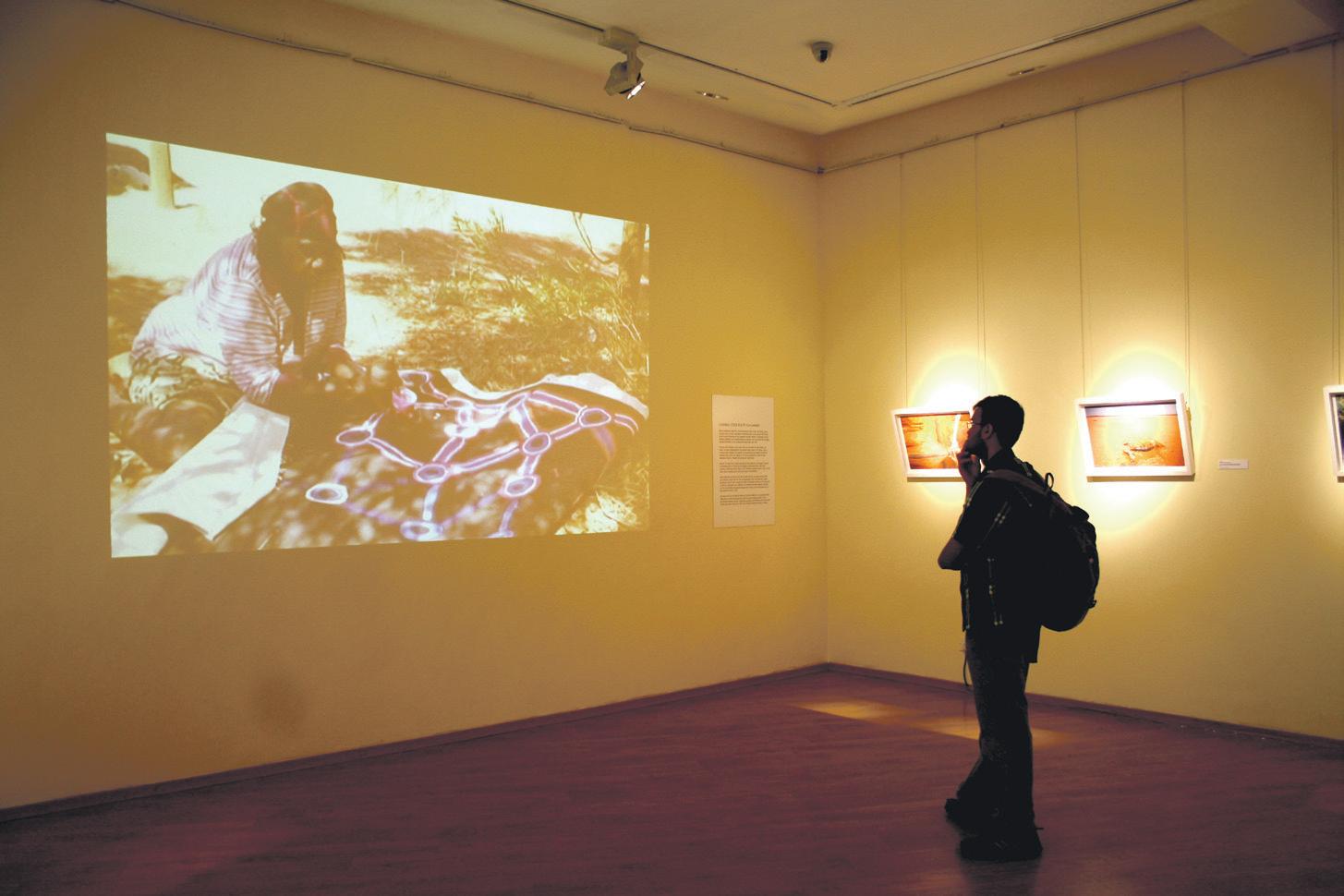
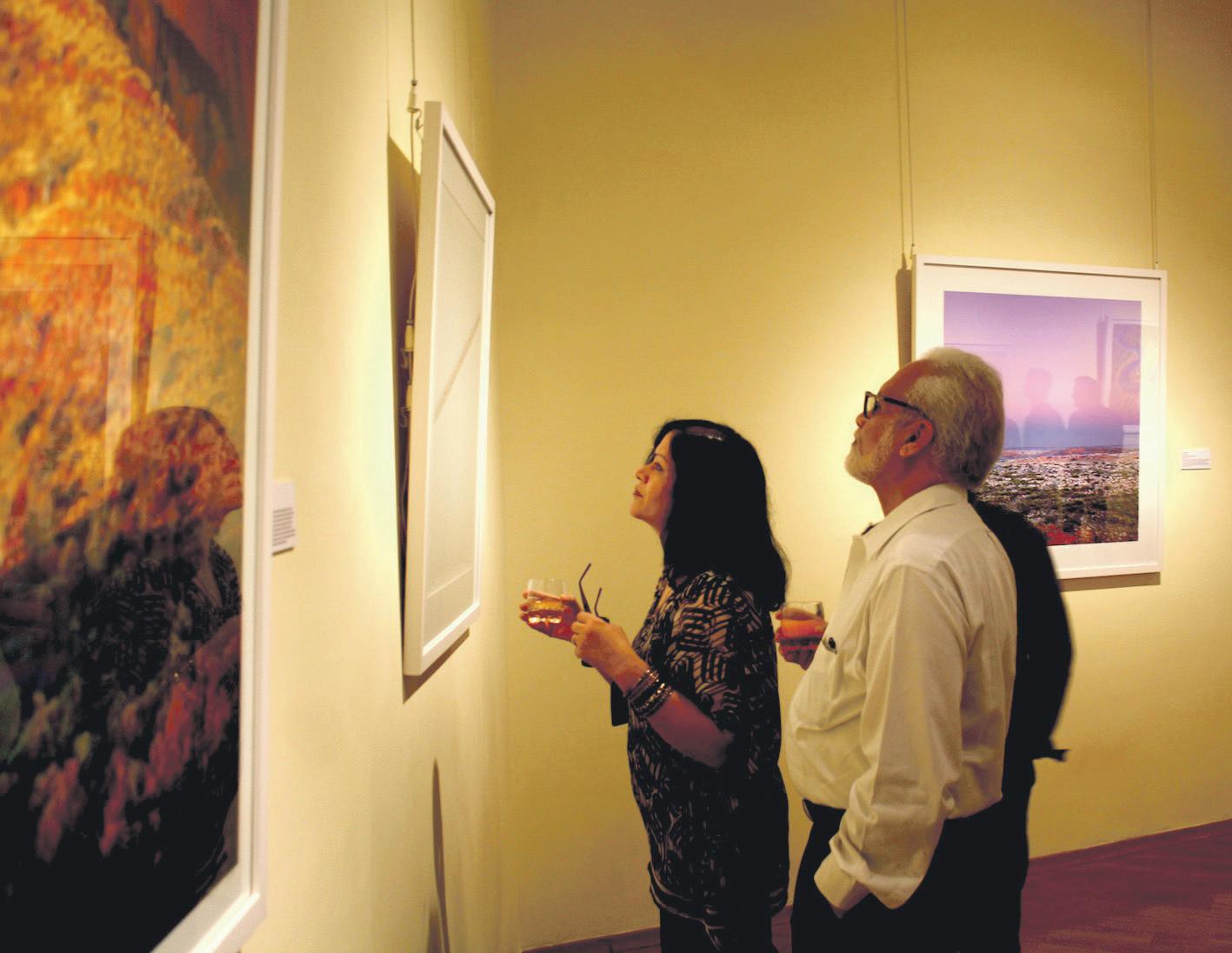
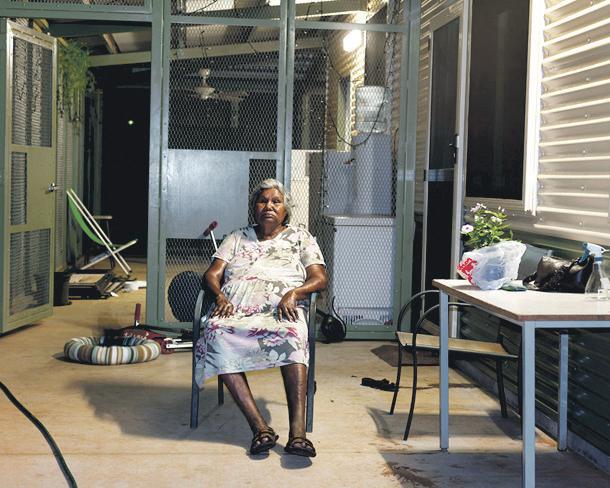


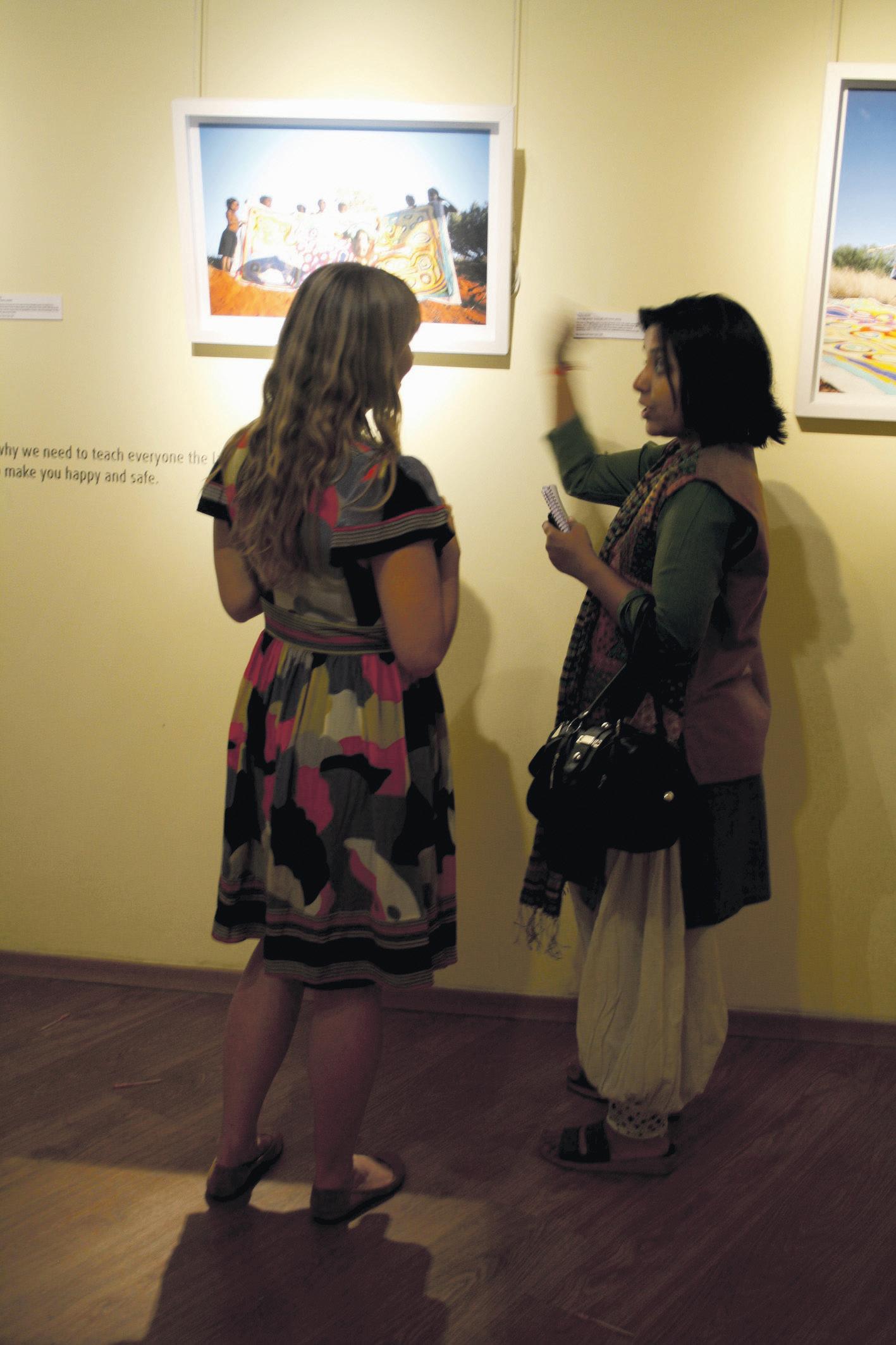
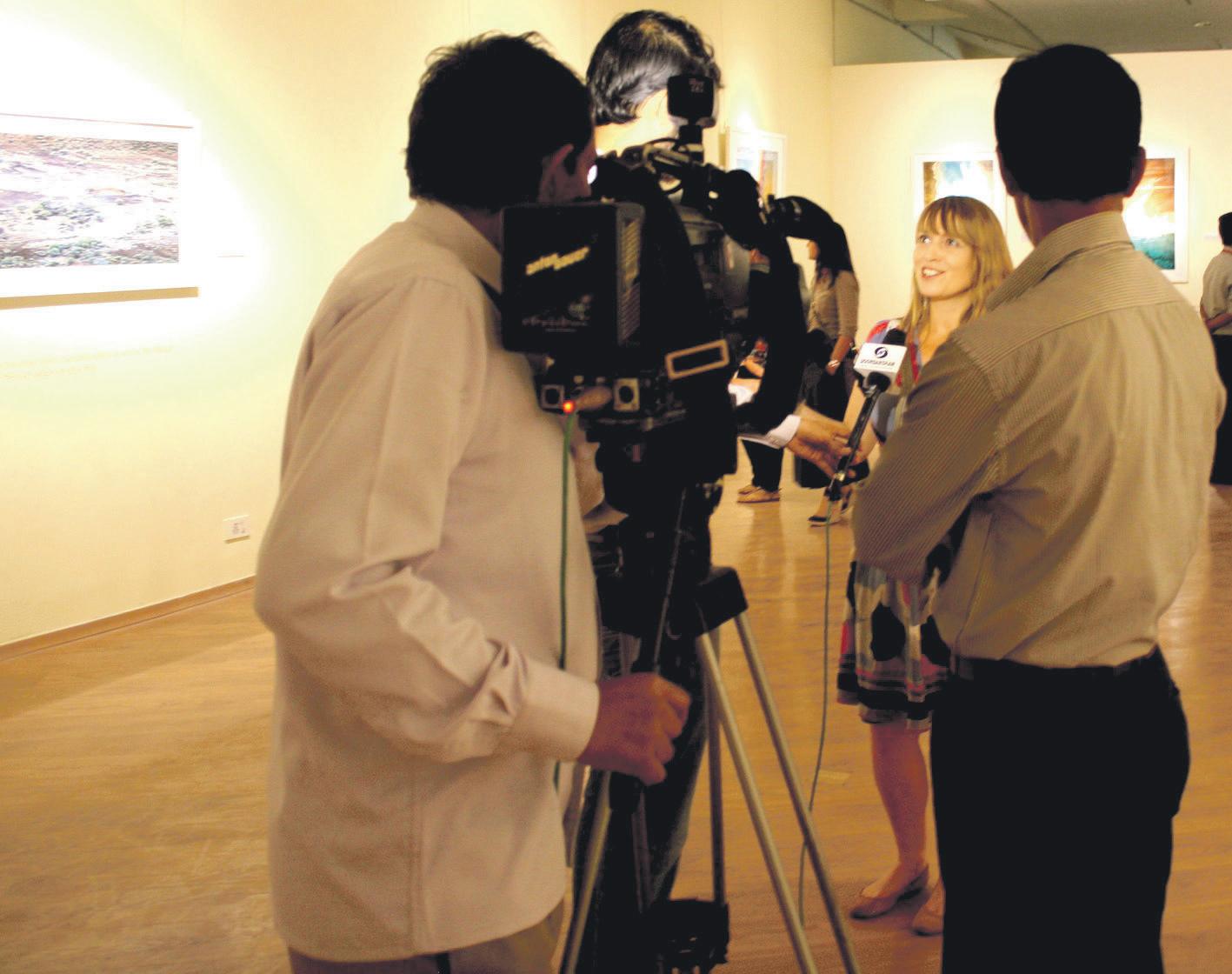
FEBRUARY (2) 2013 27 NATIONAL EDITION
Bharat Sikka’s works from Pilbara Stories
Fo R m
Fo R m
2012: Alice Guinness, Roeburne; Eva Jane Hawke, South Hedland, and Pansy Hicks, Roeburne
Photos:
Photos:
The Jeremy Fernandez incident:
Another incident comes to light which casts a shadow over
BY noEL g dE soUZA
Rosa Parks. There is a Rosa Parks medal Malaysia. He claims to have experienced racism at times. Jeremy bears a Portuguese name (the Portuguese version is Fernandes), and he is of Indian, more particularly, of affected the sensitivities of Indians. Those miscegenation, which was legally forbidden in several American states and in apartheid South Africa, was unknown. promote the state in India.

attempts to pursue friendly
The most famous refusal to vacate a seat in public
and well-dressed Gandhi, who had been admitted as a barrister in Britain, was travelling by train in South Africa. His presence in a first class compartment was objected to by a white

belongings at Pietermaritzburg. This was well portrayed in Richard Attenborough’s . Gandhi was then allowed to travel by first class the following day, but he was later assaulted by a stagecoach driver as he continued his journey, for having refused
Unknown to those who were oppressed, would change the history of India, South Africa and America. Gandhi to them, is a hero. Gandhi did not react with violence. instead, developed the concept of peaceful
adopted this concept and successfully used
The Jeremy Fernandez incident should not be swept under the carpet. The NSW Government should seize the initiative and counsel and discipline its staff to avoid such ugly and unjust behaviour. Such incidents stain the good work done by well-meaning
There are books and songs that celebrate
28 FEBRUARY (2) 2013 www.indianlink.com.au
gays, India and identity
Despite decriminalisation of homosexuality, gays are still treated with discrimination
BY TAnVEER AHMEd
In an unusual but highly contested current case in Australia, two Bangladeshi men are involved in a dispute about being accepted as refugees because of their sexuality. According to the tribunal’s finding, the men claimed that if their homosexuality was discovered in Bangladesh they “might be verbally or physically abused, arrested or even killed by religious people and the police”. For this reason, they also avoided contact with the Australian-South Asian community, as they believed others “would not accept” the relationship.

In what became a slightly ridiculous and lurid twist, the couple was forced to prove the authenticity of their relationship through explicit videos and photos of them attending homosexual events and festivals together.
The nature of the case indicates the fear of the Australian government. If this became a precedent, it would not be long before a legion of pink boats carrying a new set of refugees, now homosexuals, took over the headlines surrounding asylum seekers. A similar case arose in 2003, leading to an array of appeals and counter-appeals.

The case raises the question whether it really is so difficult to be gay in South Asia.
sexuality. This is difficult enough in Western cultures, let alone South Asian environments of social conservatism and conformity. Ultimately, mental health presentations are always about unusual, unhealthy ways of communicating distress.

Their growing voice and assertiveness is apparent however, highlighted recently by the much lauded theatre production, The Last Chai which takes a comic look at the life of a homosexual Indian in Australia.
Back in India, a recent report from a leading Indian academic institution suggested gays felt a greater acceptance since the decriminalisation of homosexuality in 2009. The report from Delhi’s Jindal Global Law School was compiled from face-to-face interviews with thirty-two homosexuals in Delhi from February to October 2011. ‘It is evident from the study that decriminalization of section 377 has led to increased self-confidence and selfacceptance amongst the respondents,’ the report said. ‘Some respondents also reported that they could now argue with the police’.
Gay patients often need to be treated for other diagnoses such as eating disorders, self harm or depression, usually because they are struggling to come to terms with their sexuality
The public expression of homosexuality in India and the region became openly debated during the first gay parade held in Delhi in 2008. A large portion of the several thousand who marched wore masks to hide their identity. They were both celebrating their sexuality and protesting against an 1861 penal code enacted by the British that “carnal intercourse against the order of nature” is punishable by life imprisonment. While it is rarely used, there are incidents of corrupt police using it to blackmail suspected homosexuals.

As a psychiatrist I regularly see patients of Indian, Asian or Arab background who have great difficulty in negotiating their sexualities. I have even had patients ask me to cure them of their affliction, in the hope that it will spare any stigma or distress for their families. I remember a heartbreaking scene in my consulting room where a young Lebanese man returned after a decade overseas to tell his mother that he was gay. They embraced, the mother cried and said she loved him no matter what, but within days she was hospitalised with psychological complications.
Gay patients often need to be treated for other diagnoses such as eating disorders, self harm or depression, usually because they are struggling to come to terms with their
The report also moderates this finding with the warning that more liberal attitudes towards gays is almost certainly a limited trend in the big cities. Regional or rural areas would not be so accommodating.
This is certainly backed up by Australian author Benjamin Law who conducted a unique tour of gay life in Asia in his book Gaysia Several chapters illustrate authority figures that view homosexuality as a ‘bad mental habit’, such as Baba Ramdev, a yoga instructor whose Indian followers number more than 80 million.
The key conflict when comparing it to the West is that most men having sex with other men do not consider themselves gay. For many, the fact that a man has sex with another man has little to do with ‘gayness’. The act may fulfil a desire or a need, but it doesn’t constitute an identity. This type of identity remains rare in South Asia and is usually limited to an educated elite who might have studied overseas and live in cities like Mumbai, Lahore or Dhaka.
Their isolation is much reduced through the internet, and many are able to connect both emotionally and physically through sites such as ‘Boys in Bangladesh’.
It is common throughout South Asia to see men holding hands and living together well into adulthood. No suspicions would be raised.
What the Bangladeshi couple seeking refugee status are really protesting is an inability to proclaim their identity in public, rather than quietly practising an aberrant behaviour but maintaining their broader social obligations. The outcome will have many implications for the politics of intimacy. The yearning for human selfexpression is at least as great in the bedroom as it is in the ballot box.
FEBRUARY (2) 2013 29 NATIONAL EDITION
op INI o N
The sneaky Year of the snake
2013 could be a year of doom and gloom or pleasure and prosperity – take your pick, writes
FARZANA SHAKIR
Chinese New Year was on February 10 this year.
Our Sydney community marked the arrival of the Year of the Black Water Snake with much pomp and aplomb. Red was the prevalent colour with people wearing it to ward off bad luck and decorating their houses and businesses in crimson hues. Even the sails of the iconic Sydney Opera House turned red to mark the start of the New Year and to recognise the contribution of Chinese Australians to New South Wales. Sydney Airport joined forces with the City of Sydney with decorations throughout the terminal and a traditional lion dance to greet passengers at the international terminal forecourt. An exhibition of the contemporary Asian Australian artists aptly titled ‘Snake Snake Snake’ is on until February 23 at the Sydney Town Hall along with many other activities like the Chinese New Year Twilight Parade on February 17, the Lunar Feasts, Chinese New Year Markets, Dragon Ball and Dragon Boat Races. With so many festivities planned, the local community is determined to make the long celebration a memorable occasion, albeit with a hint of trepidation. The Year of the Snake is not considered particularly auspicious in Chinese beliefs. The zodiac calendar of the Chinese is depicted by 12 animals, of these the snake is the sixth. It follows the year of the Dragon and recurs every twelve years. So in the last century, 1905, 1917, 1929, 1941, 1953, 1965, 1977, 1989 and 2001 were all snake years. The twelve animals of the calendar are each associated with one of the five natural elements of metal, fire, wood, earth and water. In keeping
with the yin and yang, each year is associated with one of the five elements in rotation, and any given combination recurs only every 60 years. The fixed element of snake is fire, while 2013 is a water year which makes it a volatile combination. This is why Asian prognosticators are predicting a venomous year full of disasters and misfortune.

Characteristically, people born under the snake sign are said to be mysterious, intuitive, collected, graceful and refined. Some famous people born in the year of the snake include Oprah Winfrey, Pablo Picasso, Edgar Allen Poe, Charles Darwin, Bob Dylan, Vivienne Westwood and Sarah Jessica Parker. Ancient Chinese wisdom suggests that having a snake in the house is good luck because it means the family will not starve; but at the same time since snakes like to hide in water or in mud and are poisonous, the general consensus is they are harmful to humans. The belief is so deep rooted that many people postpone weddings, having children and other decisions to avoid them falling in the Year of the Snake.
According to astrology the colour of 2013 is black, which is considered unlucky in many cultures. A quick overview of the last few Years of the Snake reveals a string of disasters like the terrorist attack on the World Trade Centre in 2001, the Tiananmen Square Massacre in 1989, the attack on Pearl Harbour in 1941 and the Great Depression of 1929.
For 2013, Asian forecasters are predicting a stock market slide, escalated conflicts amongst countries especially China and Japan which may even result in war and further weakening of
m r Eric Bamba Lee
the American economy. The stock market is expected to enjoy a smooth first half before becoming tempestuous in the second half of the year. Despite some encouraging signs, the crisisravaged Euro zone is also not expected to recover just yet. The Euro currency is predicted to lose ground and there is a threat of the union splitting altogether. May is the month of the Snake which is when things are predicted to be very intense and tension will be at its peak. For people born in the last water snake year 60 years ago, 2013 is being cautioned as a dangerous year for health and work-wise. Other Snakes are also being urged to exercise discipline and focus on extra attention to detail in order to survive this year and achieve their required goals.
But all is not doom and gloom;
I can solve all your spiritual problems in a few days time. I can specialise in bringing back love ones, using the most powerful KAHTEEm spirits from HAITI. I can help bring luck in your life, luck regarding money and fame. I can help give you the most powerful protection, protecting you and your family for life from spirit, spells, and your enemies. With the power KAHTEEm, will also help you to get back your lost happiness, and unknown spiritual problems will all be solved, all your dreams will come true. Your pain is my concern; I will do my best not to disappoint you. All the work is private and confidential
please do not hesitate to call Mr erIC BAMBA lee on 0406826302 or 0448 852 041 from Monday to Saturday 9:25 am to 7:25 pm by appointment only.
some astrologers are describing the snake as a positive sign which, according to their calculations, means advances in science, education and research. According to numerologists too, this year will be lucky and will neutralize the negative effects of last year. With all this conflicting information floating around perhaps it is best to believe that this year will be like any other; full of new and different challenges, with its share of good and bad tidings. In the end what you choose to believe will dictate how you remember it. So it is best to keep an open mind, make the most of the opportunities that come your way and soldier on with the problems to the best of your abilities.
Gung Hay Fat Choy!!!
A quick overview of the last few Years of the Snake reveals a string of disasters like the terrorist attack on the World Trade Centre in 2001, the Tiananmen Square Massacre in 1989, the attack on Pearl Harbour in 1941 and the Great Depression of 1929
30 years of experience
She IK h lAMIN
International renowned spiritual healer / clairvoyant with spiritual powers of my ancestral spirit, I can help you with bringing back loved ones. Family problems, depression, substance abuse, impotency / infertility, court cases, jinx, demonic forces, success in business, exams career, job interview, marriage.
30 FEBRUARY (2) 2013 www.indianlink.com.au
l I fe S tyle
A N IN ter NAt I o NA l S p I r I tuA l he A ler AND C l AI rvoyAN t WI th poW er of KA htee M
Pl. call on
02 9649 2554, 0458 439 994







FEBRUARY (2) 2013 31 NATIONAL EDITION Call 0410 887 878 now $100 off if you mention this advertisement Offer Valid till 28th Feb 2013 Adress: Suite 903, Level 9, 370 Pitt Street, Sydney Email: admin@longtonlegal.com.au Samuel Li Solicitor FREE FiRSt ConSuLtation ContRaCt REviEw Fixed fee Coveyancing Lease Are you entitled to stamp duty concessions? What is a ‘cooling off’ period, and who can cool off? Should I have the contract and S149 checked before I buy?
Saying ‘I do’ the Bengali way


Passed down through
BY RITAM MITRA
Indian weddings carry with them an altogether different level of tradition, fanfare and excitement. The infusion of Bollywood into mainstream culture has given rise to the widespread knowledge that Indian weddings are big, colourful and musical affairs. However, some traditional customs that take place during the course of the wedding can often be difficult to understand. Here are some of the more unique traditions that shape Bengali weddings in particular, following recent wedding festivities in Kolkata, India.
Aai budo bhaat
The aai budo bhaat is a ceremony celebrated by the bride’s family, and signifies the last meal the bride shares with her family and friends as an unmarried woman. It’s something of a feast, and will consist of typically Bengali dishes, primarily fish, as well as several sweets. It’s common for brides to have several of these events in the lead up to their wedding, since many of their friends and family may wish to throw a party for the bride. However, the logic still holds – the next time the bride will dine with them, she will be married and most likely, will bring her husband along!
Gaye holud (haldi)
The gaye holud (literally ‘turmeric on the body’) has become a celebrated occasion across many Indian weddings – but it is an especially important tradition amongst Bengalis. For this ritual, the groom’s side will visit the bride and present her with clothes and jewellery, amongst a host of other gifts for both the bride and her family, on beautiful trays called tattvas. The groom’s side also brings the turmeric for the gaye holud ceremony. An odd number of married women will cover the bride’s face and body with turmeric, which is said to purify and beautify the bride ahead of
her wedding day. During the event, all of the women (and occasionally the men) will cover each other with turmeric to join in the celebrations.
Saat paak
Before she sees the groom for the first time on the evening of the wedding, the bride is seated on a low wooden stool, called a pidi. The pidi, with the bride sitting on top of it (often rather precariously!), is lifted up into the air by four brothers – cousins are also fine – and is taken around the groom in seven complete circles. This is said to securely wind the couple to each other.
Like other Indian weddings, the couple still ‘tie the knot’ and circle around a fire together seven times. This happens later on in the Bengali ceremony.
Mala badal

During the mala badal – the exchanging of garlands which is common in almost all Indian weddings – the bride is still carried on the wooden pidi by her brothers. The bride and groom exchange the garlands they are wearing. At this stage, a little game usually takes place: the brothers lift the bride up as high as possible so as to make it impossible for the groom to put his garland around her neck. This is in an attempt to show the groom’s side that the bride will be held in the highest respect in her new home, and is the ‘better half’. The groom’s side will hoist him as well in competition.
Topor
An infamously uncomfortable and impractical piece of headwear, the topor is traditionally worn by Bengali grooms as part of the wedding ceremony. It is extremely fragile and is ornately decorated out of sholapith, also known as Indian cork. It is believed to bring good luck, and the bride also wears a similar piece of headgear.
Bashar ghar
While most Indian weddings will feature a sangeet night filled with song and dance, for most Bengali weddings back in India, this night is actually on the night of the
wedding itself. Following the celebrations at the wedding, the groom will traditionally spend the night at the bride’s home, where all the fun and laughter will continue. However, it’s the younger friends and family – those from the couple’s generation – that will stay up into the early hours of the morning celebrating the marriage and enjoying song, dance and company.
Shubho drishti
While being lifted on the pidi by her brothers, the bride covers her face with betel leaves. She removes these only when the saat paak has finished and the couple are in front of each other, ready to exchange garlands. The removal of the betel leaves is called the shubho drishti. The significance of this is that the groom is the first person to look upon the bride.

32 FEBRUARY (2) 2013
tr ADI t I o NS
Photos courtesy of Bibek Ghosh and Madhura Chakravarty
Bride and groom: Kusumika and Kaustav of Kolkata, who wed late last year
www.indianlink.com.au
the ages, the rituals that make a wedding, sanctify it and make it special
The significance of Shubho Drishti is that the groom is the first person to look upon the bride.









FEBRUARY (2) 2013 33
my HsC journey
BY MEgH MAnKAd
As I write this, I am sitting on the beach in the Bahamas, sipping on a cocktail, enjoying life…I wish!
Post-HSC life hasn’t completely lived up to its expectations, but nonetheless, I am extremely glad that the HSC is done and dusted. I haven’t touched a pen in about 3 months, and I still have less than a month of holidays left!
The HSC year was an extremely tough one. Assessments, exams, and the fact that ‘everything counts’, was a lot of pressure for a 16-year-old, but I managed to survive. The key to this was spreading work out over the year, and never leaving anything to the last minute. As soon as I got a task, I would attempt to start on it, so that I would have enough
time to fine-tune later on. I like to think of myself as an organised individual, although my mum would beg to differ. To add to my HSC workload, I had School Prefect responsibilities, part time work and extra-curricular activities. Thus, I really had to organise my time well, and thankfully, I was able to do so.

Of course, there were moments when I had absolutely no motivation; those times when you ask yourself, “What’s the point?” To overcome this, I simply pictured myself writing the last words in my last HSC exam and putting my pen down for one final time. This always seemed to work. Other strategies that I used to regain motivation and overcome stress were eating, taking short naps, and taking regular breaks (sometimes too regular!)
I do have a few tips for those who are now in Year 12, based on the strategies I used to achieve my marks. Firstly, make a list of all the work you want to complete in
a day. This proved to be extremely effective for me, as I could plan well ahead. If I felt like I could do more work, I would add things to the list, and if I couldn’t finish the tasks on one day, I would transfer them to the following day. Simple, yet very effective.
Secondly, make sure you have some form of leisure activity that will take your mind off your studies. Unfortunately, I gave up sport for the HSC, as I thought it would take too much time. But sport is a great way to release HSC stress, and will help you maintain a balanced lifestyle. My last tip: don’t fret if you do badly in an assessment or two. I was dissatisfied with plenty of exams, but I did not linger on this and I quickly moved on. Just remember that there are plenty more opportunities to improve, and there is no point in wasting your time and energy worrying.
Overall, Year 12 was a great experience. I challenged myself, learnt a lot, and had some

experiences that will stay with me forever. I was lucky enough to have a supportive network of family, friends and teachers, without whom the HSC would have been much worse than it actually was.
These days I have been going out with friends, getting back into sport (albeit very slowly) and catching up on the things I gave up for the HSC: TV shows, movies and sleep! I have also started preparing for University, which is fast approaching. I will be studying a Bachelor of Economics degree at the University of Sydney, and hopefully transferring to Law next year. I missed out on Law by a very small margin (0.05), which was extremely disheartening. But if there’s one thing I’ve learnt from the HSC, it’s that hard work and perseverance will allow you to reach your goals. In my case, I finally achieved an ATAR of 99.60.
I am both anxious and excited about this new phase of my life.
taking
It will be completely different to anything I have done before, but I will embrace this as a challenge, and put in my best effort. I have heard that university is equally stressful as the HSC. Surely it can’t be, can it? Anyway, I’m not too worried for now. I’m going to make the most of my holidays; a well-deserved break after a challenging year! Now back to that beach in the Bahamas…..
34 FEBRUARY (2) 2013 www.indianlink.com.au
The thought of basking in the Bahamas is well-earned, after a gruelling, yet rewarding Year 12
S tu D e N tS
Strategies that I used to regain motivation and overcome stress were eating,
short naps, and taking regular breaks (sometimes too regular!)

FEBRUARY (2) 2013 35 NATIONAL EDITION
Royal Copenhag


A fairytale town with imposing grandeur and contented charm
Volunteering as Protocol Manager during the Sydney 2000 Olympic Games, I had opportunity to meet and greet a few times, a young, jeans-clad Danish bloke Frederik and his Aussie girlfriend Mary. Five years later they got married and became Crown Prince and Princess of Denmark. So upon arriving in Copenhagen, not knowing exactly where to begin exploring, this loose royal connection inspires me to go on an imperial odyssey.
I start with Amalienborg Palace where the golden couple reside along with Frederik’s mother Her Majesty Queen Margrethe II, the present head of state.
Denmark is an archipelago comprising of over 400 islands. It is linked to Germany by a

this Scandinavian nation boasts one of the oldest monarchies in Europe. Over centuries, the Danish rulers beautified their land with architecturally stunning edifices - palaces, churches, bastions and monuments that stand today as one of main attractions of Copenhagen, the capital city where most of the regal actions took place.

Like their British counterparts, the Danish royals don’t have any real power, but carry lots of prestige and charisma. They are highly prized by the people as a living manifestation of the country’s history and tradition. Also their simple lifestyle earns them respect. The Queen, who ascended the throne in 1972, is highly educated and independent, with her own interests and work as a stage designer and translator. The Crown Prince and Princess are said to live like any other Danish citizens and are often seen within the public domain without any royal hang-ups.
I reach Amalienborg Palace with the slim hope of

somewhere, but disappointingly find they are all away in London for the Olympic Games. So I am left on my own to explore the regal quarters edged around an octagonal cobblestoned square. The centre piece here is an equestrian statue of Frederic V, the 18th century king who developed this palace and the adjoining neighbourhood as a new, smart and elite district to celebrate 300 years of his family’s rule of Denmark.
The palace complex consists of four similar looking stately buildings, three of which are official residences of the royal family members while the fourth is converted to a museum. Visitors are allowed to wander freely in the square, take as many photos they like of the bear-skin hatted guards, but access to the inside of the royal residences is prohibited, though by visiting the museum one can peek into the pomp and grandeur of it all. I learn from an attendant that this palace became the royal home after their original abode, the Christianborg Palace was destroyed by fire
Copenhagen to some resembles a fairy-tale city, still largely low-rise with houses featuring oxidised copper on the roofs. The city area, criss-crossed with canals like Amsterdam, is small; you can easily walk from one end to the other in less than an hour. A walking tour is best for a handson encounter with sights and sounds of the Danish capital, however a canal cruise is highly recommended for a different orientation of the city, very colourful with centuries old gelaticoloured gabled buildings at the starting point in Nyhavn.
Copenhageners claim their city to be the safest in Europe, if not in the world. It’s true; your only fear will be getting hit by a speeding bicycle! Cycling surely is the preferred mode of transportation for the 1.2 million people here, keeping them fit in a clean environment. However there is also a good array of public transportation comprising of trains, buses and taxis.
From the Amalienborg Palace precinct I march up to see the Marble Church next door, whose large green dome, designed to rival that of St Peters in Rome, dictates the city’s top view. It took nearly 145 years to build this grandiose edifice, made mainly from Norwegian marbles whose lack of supply delayed the
completion. It’s said at the end local marbles were used and you can easily spot the two types. You are allowed to go to the top of the bell tower for a breathtaking vista if you can negotiate 260 steep and twisting steps. I give it a miss and spend time at the brick-built Rosenborg Palace, a museum displaying a dazzling collection of crown jewels, perhaps comparable to the ones displayed in the Tower of London.
My next stop is the historically significant Christianborg Palace, now home to the Danish Parliament, Supreme Court and Royal Reception Rooms. It is located on a small island. I reach there walking through Stroget, the world’s longest pedestrianized street, flanked on both sides with trendy bars and cafes blended with an interesting mix of churches, statues and museums.
The hefty granite faced neo baroque palace I see today stands at the site where the city’s founder Bishop Absalon established a castle in 1167, making it the nucleus of a future metropolis. The castle was later replaced by a grand palace, renovated several times by future Danish monarchs who added more and more grandeur. A devastating fire twice destroyed large portions of it however, making it unliveable. The present version was built around what remained of the previous
tr Avel
IP HoR
structures, but by then the royals had settled at the Amalienborg Palace.
Another citadel that interests royal enthusiasts is the Kronborg Palace which is located in the nearby port town of Helsingor, 45 km north of Copenhagen.
Shakespeare has made this imposing castle immortal by making it the setting for his Hamlet. The half day trip from Copenhagen is thoroughly enjoyable to trace the dramatised paths of Prince Hamlet and his uncle Claudius who poisoned Hamlet’s father to become King of Denmark.
You can spend days in Copenhagen chasing royal grandeurs, but there are other attractions that demand attention as well from first time visitors; most significant among them being the Tivoli and the Little Mermaid.

Dotted right in the heart of the city in front of Radhus, Copenhagen’s grand red brick town hall, the 1843 established Tivoli Gardens is a colourful and vibrant park filled with adrenalin rushing rides, stage shows and top notch entertainment that brings your childhood alive. At night, the lighting and fireworks display is impressive.
Perhaps Little Mermaid needs no introduction. Like Big Ben is to London, Eiffel Tower to Paris, the Little Mermaid is the iconic symbol of modern Copenhagen. Placed at the end of the city’s picturesque harbour promenade in 1913, this tiny bronze statue of a mermaid sitting on a rock and sadly gazing at the passing ships was carved by famous sculptor Edvard Erikson. He was commissioned to do so by Danish beer baron Carl Jackson who was inspired by the tale of a little mermaid falling in love with a prince as portrayed by writer Hans Christian Anderson in his ballet Little Mermaid. For many visitors it’s the first thing to see in Copenhagen and as expected the waterfront area is packed with busloads of tourists and souvenir sellers all the time.
As said, the city is small but attractions are big and varied. So I leave the once-upon- a-time home of the Vikings with a promise to come back, next time with better luck perhaps to spot some royals.
Co PE n HAg E n
GETTING THERE
Clockwise: Rosenborg Palace

The Marble Church

Equestrian statue of Frederic V Image of Her Majesty Queen Margrethe II

Illuminated Tivoli Gardens

Tourists at the Little Mermaid site

Royal Guards at Amalienborg Palace
Along Stroget
Fly Singapore Airlines (www.singaporeair.com) to Copenhagen with aircraft change at Singapore S TAY
Set near the water adjacent to Copenhagen’s new ferry terminal, Adina Apartment Hotel (www. adina.eu) offers stylish and comfortable apartment type accommodation.
GETTING AR o UND
Since roads are severely potholed, the preferred way to travel is by boat. Pandaw Cruises www. pandaw.com and the Road to Mandalay and Orcaella www.orient-express.com offer cruises on the Chindwin and Irrawaddy Rivers. mo RE INF o R mATI o N www.visitcopenhagen.com
FEBRUARY (2) 2013 37
The imposing Kronborg Palace in Helsingor was made immortal by Shakespeare who set his famous play Hamlet here.
Travel noTebook
en
Mr Darcy dreaming…
Jane Austin would applaud a turn of events that moves from fiction to reality
BY RANI JHALA
Last year I turned thirty. I was unmarried and worse, had no prospect of marriage looming in the near future. I was not picky nor did I ever think that I was better than any of the men I had met. I just wanted a special man, my own Mr Right.
From the moment I read Jane Austen’s Pride and Prejudice, I knew what that Mr Right would be like. But with that moment, I had set myself up for a decade of disappointments. The boys I met at school did not have ‘that quiet elegance’; the teenagers I met at University, treated me as an ‘equal’, and not as an object to worship. And the men that I came across through work, simply never turned up saying, “In vain have I struggled. It will not do. My feelings will not be repressed. You must allow me to tell you how ardently I admire and love you.”
And so I led the life of a single woman, happy with my romance books, busy with my job and enjoying my time with family and friends. That was until, one by one, they each got married and made it their prime occupation to find me a husband.
They each knew of a man who was just right for me. And everyone made the same comparison, “He is just like your Mr Darcy”. They were never anything like ‘my’ Mr Darcy!
For over five years I gave in to their pleas and met the men they introduced me to, but ultimately I had had enough. Enough of the eagerness in their voices, the anticipation in their looks and the sheer disappointment in their voices, as they said, “Oh well, back to the drawing board.”
The only person who never got flustered was my brother. And it was he who came up with the brilliant plan to dupe the matchmakers in my life. He booked me onto a tour aptly called ‘Twenty days in Jane Austen’s footsteps’. And on my return I was to create this fictitious longdistance relationship that was to stretch over the next five years and give me some much-needed breathing space.
My trip to England was amazing. I got to see the little table Jane Austen sat at as she
created her wonderful stories. I touched the doorway through which she had once walked and looked at the sky from exactly the place she would have stood.
I read the letters she had written and looked at the volumes of her books that now graced the bookshelf.
And for the first time I saw the reality behind each of those wonderfully woven stories. The power of a woman to be able to create a perfect man in her imagination, and of her inability to find such a man in her own life!
Yes, she knew love but marriage and motherhood remained at bay.

During the last days of the trip, I pondered on my own life. Would I have been happy with any of the men I had been introduced to in the past? Was I foolish to believe that somewhere there was someone just for me, or was I stupidly embracing a life of loneliness and pain?
I got my answer when we attended a series of plays in London. As I sat and watched an actor perform the role of Mr Darcy, another of Captain Wentworth and a third of Mr Knightley, the truth finally hit me. Jane Austen’s men were embodiments of decency and chivalry. They were honest, caring and just. They were protective and strong, yet each came with the usual human failings of jealousy, anger, pride and arrogance. But what set them truly apart was that they loved their heroines beyond anything and everything.

I realised then that I did not want Mr Darcy or Captain Wentworth. I wanted someone to
come into my life and make me the reason for his existence. And I was determined not to settle for less. And until that man waltzed into my life, my brother’s little game sounded ideal.
At the end of the tour, I stayed with his girlfriend’s family in London. Her younger sister was to be my partner in crime. We became good friends almost from the time we were introduced, but it was the quiet man in the background that gave me a sense of deja vu.
The original plan did not involve the existence of a real love interest. I was to write the letters and she was to email them back to me, but somewhere along the progression of this plan, things changed. She suggested that we use her cousin as the model for the photographs and to make things realistic, he would send the letter. It was also agreed that he would call me once a week, because that was what fiancés do.
And so we spent the next week making our fantasy real. We toured the city and took photographs. We researched the best love letters and copied lines from there, and we spoke honestly about our personal dilemmas. I learnt from him that men too, face the same social pressures.
Did we fall madly in love? Absolutely not, but he and I did become very good friends. As I bid him goodbye I even felt that maybe I was leaving behind someone who, given the chance, could have meant more.
Back at home, I established my fictitious romance. I told everyone of this wonderful man that I had
met and showed everyone the photographs. To make it even more authentic, I wore a diamond ring on my engagement finger. All asked the one question, “When’s the wedding?” I gave them the same reply, “We’ll decide the date after his visit at the end of this year.”
I had bought myself a year of peace, or so I had thought. In the months that followed, a new game began. He would phone and I would take the call outside, pretending to need privacy. I would carelessly leave his email open, ensuring that everyone was aware of it. I constantly dropped photos from my handbag. I even brought bridal magazines and went through this whole charade of trying to pick the perfect wedding outfit. It actually was quite a lot of fun, and I looked forward to his emails noting that as time went by, our carefully drafted letters were being replaced with ones written by him personally. I didn’t complain, because his letters were far better than the ones we had drafted together.
Everything was running to perfection, until one day, I stopped receiving his phone calls. His emails ceased as well, and mine did not get a reply.
It took me a month of silence before I realised that I was missing more than a friend. I asked my brother if he had any idea of what had happened. His only reply was, “Don’t worry sis, we will find someone else to write the letters.”
“Well you better, Valentine’s Day is next week. I need my ‘fiancé’ to send me roses or
no-one will believe he exists anymore!” I replied in anger, but in my heart I knew what was really wrong.
The day before Valentine’s Day, and with no replacement found, I ordered a dozen long-stemmed red roses and a huge box of chocolates and addressed them to myself.
When the doorbell rang on the morning of February 14, I knew my order had arrived. Calmly I opened the door, but instead of my twelve long stems, the man held a massive bouquet of a hundred beautiful blooms and instead of the local florist, there stood my ‘fiancé’.
And how could I say ‘no’ to what he asked next, when he began with the words, “In vain have I struggled. It will not do. My feelings will not be repressed. You must allow me to tell you how ardently I admire …………”
From the moment I read Jane Austen’s Pride and Prejudice, I knew what that Mr Right would be like
The day before Valentine’s Day, I ordered a dozen long-stemmed red roses and a huge box of chocolates and addressed them to myself.
38 FEBRUARY (2) 2013 www.indianlink.com.au
fiction
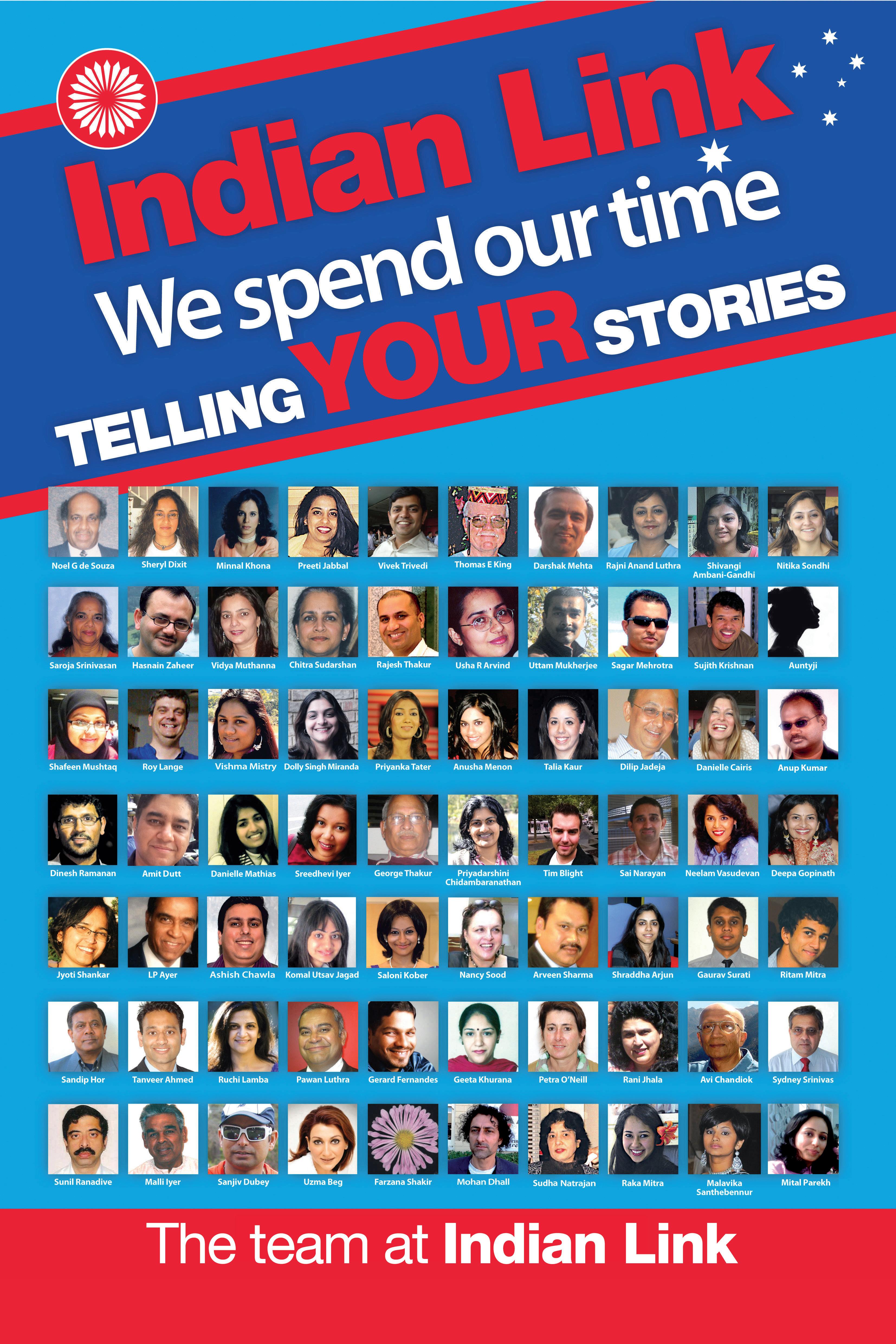
SeeKInG GROOMS
seeking suitable match, a non smoker, ideally aged between 50 and 60. For fair, young looking Hindu lady, 5’ 2”, 54, divorced, veg, Australian citizen. Caste no bar. Please contact 0449 623 316 or email alpine_rhapsody@hotmail.com
suitable well-settled / professional match for Punjabi Arora, beautiful, never married, 39 / 166, qualified IT professional. GSoH with good family values. Brought up in India. Working in mNC Sydney. Australian citizen. Early marriage. Serious enquiries only. Email details with photo: ausgirl101@gmail.com
seeking match for tall, good looking, slim, fair, educated, working Hindu Khatri girl, 25, brought up in Sydney. Well educated and settled family. Boy with similar background preferred. Email: 1169ab@gmail.com
seeking genuine, compatible, well educated, employed / business match from respectable family, broad minded /mature outlook, independent, Indian background, age 50+ for caring, honest, Indian Christian divorcee, Australian citizen, well settled in Perth, 50 years, 5’3” tall, younger looking, attractive graduate nurse, employed. Caste no bar. Please send profile with photo to email emily.lotus@hotmail.com
MA t rIM o NIA l S
seeking suitable match (from Australia, never married) for Hindu girl, 35 years, Chartered Accountant, non-veg, living in Australia over 25 years, with eastern and western family values. Please email with all details on ganesh2011v@gmail.com
Well settled / professional alliance invited from Australia / India for 41/165, unmarried, charming Punjabi Khatri girl, family oriented and responsible, IT professional, working in Sydney. Australian citizen. Early marriage. Can relocate. Serious proposals only.


Email profile with recent photo: sydgirl09@ gmail.com
Respectable sikh Family of New Delhi seeks alliance for their smart good looking sweet natured family oriented daughter 24/165cms, B.Com Graduate, Primary Teacher, looking for a well educated boy from a cultured family well settled in Business/ Industry/Profession. Girl and Parents in Sydney from end December until mid January.
Call 0431 337 881
37 yrs old Brahmin never married graduate girl currently visiting Australia. Looking for Australian citizen preferably unmarried. Whole family settled here. Belongs to status business family. Applied for permanent residency earlier. Contact with photo and details urgently at npkhanna@ymail.com
SeeKInG BRIDeS seeking suitable match for 37 years, good looking Gujarati Brahmin boy, 5’7” Australian citizen caste no bar. Born and brought up in mumbai, India and moved to Sydney 5 years ago. Please email with details on ravi_p100@hotmail.com
Match required for a 48-yo, slim, clean shaven, Jat Sikh Aust PR living in melb, working for a Bank, own house. I have no children but I don’t mind if she has children. Genuine enquiries only email: jat_sikh@ hotmail.com
single tall man, often travels with work, desires to meet attractive good character single or widow lady over 40 with a view to marriage. Apply PP GPo Box 2336 Adelaide, South Australia 5000.
seeking suitable match for a boy, 6’ tall, 31 yrs, never married, Australian Citizen, Athletic, Punjabi Khatri, reputed corporate professional. Please email your particulars with recent photo( Compulsory) on win.rocky@gmail.com or call 0430 179 273.
Compatible match for 1975 born, handsome clean-shaven Sikh Khatri boy, 5’ 9”, two Post-Graduate degrees from India and recently finished master in I.T from Australia . Currently on temporary resident visa and working full-time in Customer Service role. Looking for welleducated, Permanent resident / Citizen girl from Sikh family background. Early marriage. Phone: 0422 102 242 or Email: ghai07@yahoo.com
40 FEBRUARY (2) 2013 www.indianlink.com.au
Mindfulness meditation
This meditative technique helps us understand and cope with situations in real time, without being judgmental
BY sARoJA sRInIVAsAn
In 1970, Benson and Wallace from Stanford University published a seminal article titled The Physiology of Meditation
Illustrating the physiological benefits of transcendental meditation such as lower oxygen consumption, this paper drew the attention of the scientific world to the study of meditation. Since then many researchers have documented the benefits of meditation for health and wellbeing.
What is mindfulness?
In the last 20 years, many schools of meditation training for the lay public have emerged. One such is that of ‘mindfulness’ meditation which in modern terms is equated as ‘choice-less awareness’ or ‘awareness of present experience, with acceptance’ or more appropriately ‘paying attention on purpose, in each moment, without judgment, to things as they are’. Of course this is not as easy as it sounds for we have to learn to maintain the balance of our attention, emotions and thoughts, if we are to be truly mindful every moment.

In Buddhist contexts, the word ‘samatha’ is used often. This roughly translates as ‘calm abiding’ or tranquility or equanimity. Vipassana meditation, a worldwide movement at present, is a mindfulness technique, aimed at training the mind initially in concentration of attention,

followed by the arising of insight into the true nature of reality. Cultivation of mindfulness is sometimes wrongly seen as being calm, paying bare attention and being free of judgment. Bare attention supports mindfulness. While this can be helpful, without the insight gained from a true experience of this state, it can be limiting and even used as a tool to rationalise wrongdoings. Choiceless awareness is only one aspect of mindfulness, and several other mental faculties that are gained from being mindful need to be attained to truly appreciate the value of this practice.
everyday benefits
Everyday mindfulness used as a mind-training technique can be beneficial to enhance well-being and personal effectiveness. It has immense potential for personal growth and satisfaction. It helps one to develop a discipline of entering a sustained relaxed state of being which allows appropriate discernment of each experience as it happens. This would lead to acceptance of even unpleasant events as they are, and not as one would wish it to be. This would progress to changing one’s true non-judgmental appraisal of events and effective selfmanagement.
Reducing suffering
A state of unhappiness arises from a feeling that we are suffering. Suffering is defined as psychological or spiritual state that diminishes an individual’s capacity to find peace or solace in their present situation. It is also seen as unique to each individual.
Victor s. Lamba
A leading psychologist and researcher in the field, John Teasdale from the UK, has discussed three strategies for changing the three mental processes that give rise to suffering, and thus reduce the suffering. These processes are the content, process and our relationship to the material. We can change the content or what is being processed, change the process or how the material is being processed and we can change our relationship, our view, to the material being processed. Training in mindfulness enhances our capacity to practice changing these processes. The idea of maintaining the balance of these three important
aspects - thought, word and deed - to reduce one’s suffering is not alien to followers of sanatana dharma. Congruity between thought, word and action is repeatedly reiterated in many prayers, poems and stories. In Hanuman Chalisa, the poet Tulsidas says, “Man, vachan dhyan jo lave” – mind, word and attention all have to be present. This is not just being mindful in chanting the verses, but in our everyday life.
enhanced ability to staying in contact with private experience; non-reactivity, an increased feeling of inner calm and overall emotional resilience; wisdom, a self-knowledge that allows us to give up needing things to be other than they are; and compassion, an improved empathy and attuning towards ourselves and for others” as a Buddhist psychologist Ven. Thupten Lekshe (Ivan Milton) succinctly puts it.
Long term benefits
Long term benefits of mindfulness meditation practice are associated with personal qualities of “patience, a capacity to allow things to unfold in their own time; confidence, an
POSITION VACANT Smithfield
Mindfulness is the starting point to understanding ourselves; it is also what we need to do to achieve understanding and finally where we end up: it would seem the path and goal are rolled into one when one becomes proficient in being mindful. Ladies
FEBRUARY (2) 2013 41 NATIONAL EDITION ImmIGRATIoN & VISA ADVICE SINCE 1999
BMC MIGr AtIoN CoNSultANtS eimmigration Registered migration Agent 9901093, Civil marriage Celebrant A5147 member: migration Institute of Australia, migration Alliance 269 Pacific Highway Hornsby NSW 2077 mob: 0412 268 568 Tel/Fax: 02 9940 4430 email: bmcvisa@gmail.com All types of Work Visas Employer, State Sponsored Visas Regional Sponsored Visa (RSMS) Religious Worker Visa Partner, De-facto, same sex visa EOI, All types of Skill Visas Domestic Violence Partner Visa Carer Visa Student Visa Parent Visa Child/adoption Visa Remaining Relative Visa Sponsored Visitor Visa MRT, RRT Reviews Ministerial Appeals All Skill Assessments
pS yC he
to work in warehouse sorting
Hand Clothing for Export Company. Full training provided.
provide Tax File Number. Casual - Award Wage
– Friday 8.30am – 4.00pm
hard working and reliable people to apply in person Mon - Fri between 9.30am - 3.00pm Southern Globe Pty Ltd 3 Tait Street Smithfield
required
Second
Must
Monday
ONLY
Quick fix beauty tips

ometimes, all it takes is knowing what to do to look good in just a few minutes. Whether it is drying nail polish or fixing a broken nail, there are a few things you can do to up your glam quotient in no time at all.
Flush face
Imagine this scenario. You are at a gym, working away to get that hot bod going, and this hunk you have been eyeing shows up for his turn at the weights. But hang on, with all that strenuous running on the treadmill, your face is all flushed, red and sweaty. So what do you do to catch his attention and not have him mistake you for a human beetroot?
Help is at hand and you don’t even have to leave the gym for it. All you need to do is splash your face with cold water; that will reduce the redness. If you don’t want to be out of his line of vision and want to continue exercising, keep a spritzer handy with your water bottle. Spritz your face with a face mist or a bottle filled with cold water. You can add a few drops of scented oil to the water to add a touch of exotica.
The last remedy for reducing facial redness is to wet a towel and place it around your neck. This works instantly to cool you down and will bring your complexion back to normal.
Nail art
It has happened to all of us at some point. We grow our nails, carefully manicure them and then they tear at one end or worse, chip off. What do you do, especially if you have an important meeting or a hot date? You don’t want your finger ripping a thread off the tablecloth or running a ladder through your stockings.
What you can do is file away the torn edge of your damaged fingernail while trying to retain the shape of the nail. If that is not possible, cut up a tea bag and take a small portion from the empty side of the bag. Stick it with glue to on top of the area where your nail is tearing. After the glue dries, file away the excess paper. Then apply a base coat, followed by nail polish. This will tide you over
in an emergency. Or till the next appointment with your manicurist.
High speed drier
We have all had moments when a freshly applied coat of nail polish couldn’t dry fast enough. We have smudged our polish rushing to answer the phone or picking up something. So if you have applied nail polish and want it to dry asap, as soon as you start applying, keep a bowl of ice water handy. Wait for a couple of minutes after applying the final coat, then place your fingers into this iced water. Keep your hands under water for at least three minutes and remove. This should harden and dry the polish. Another alternative is to have a sibling or friend around when you are painting your nails. Ask them to
use the hair dryer and blow air over your nails. Make sure you stretch your arms with your fingers splayed out right under the blower so that the polish dries properly.
Pain free waxing
Now this self-imposed torture in the name of hygiene and short skirts is a necessity for all us women. But the pain can be reduced if one keeps in mind two things.
The first is to try and wax regularly before the roots get too strong and the hair grows thicker or longer. That way it hurts less. If you suffer from ingrown hair, use a pumice stone to gently remove the skin around it so that when you wax, the ingrown hair comes out too.
Secondly, if you keep in mind your period cycles, avoid waxing three days before or three days after, or even during your monthly cycle. It will hurt less as the skin gets more sensitive around that time of the month.
Bad hair day
Ever been to a new hairdresser who has cut your hair exactly how you did not want it cut? Or made such a mess that you look like a plucked chicken? Or just hated the cut and what it made you look like? Yes, yes, been there done that, many times! But one can cry and hide one’s hair under a hat or a scarf for a while. Can’t do it all the time or at work, can you? So what do you do to outgrow a bad haircut? Besides the mandatory
If you suffer from ingrown hair, use a pumice stone to gently remove the skin around it so that when you wax, the ingrown hair comes out too.
The last remedy for reducing facial redness is to wet a towel and place it around your neck. This works instantly to cool you down and will bring your complexion back to normal
scarves and hair bands, you can look at tying it up differently, if it is long enough. If it is a short crop gone bad, make caps and hats your new BFFs.
For slightly longer hair that can be tied up, a ponytail is the best and safest option. Trust me, I have tried that and till your hair grows and you get a better cut the next time, even if it is freshly washed and blow dried, tie it up. If you have bangs in the front that are too short or too long, do the same, clip them back or wear a hairband and sweep it all off your face.
Avoid wearing too much make up when you are getting over a bad haircut, as it draws attention to your face and hair. Focus on a great dress and accessories instead.

42 FEBRUARY (2) 2013 www.indianlink.com.au
If you have to look good on short notice, here are a few tips to get back the glam and great look without much effort
beauty
MINNAL KHONA
HYUNDAE IMMIGRATION CONSULTING
MARN 9792567
Michael Choi
Dear Customers,
We are offering our immigration service for all Australian temporary and permanent resident visas at affordable prices. The visa types and migration services we are dealing with are:

Temporary Visas:
Graduate Visa, 485, ‘Recognized Graduate Visa 476’ Business Long Stay 457, Religious Worker, Student Visa
permanenT resiDenT Visas:
Skilled Migration, Partner/ De-facto Relationship, Child, Carer, Business Migration, Distinguished Talent, Parent, Aged Parent, Aged Relative, Remaining Relative, ENS, RSMS.
other migration service: Protection Visa, RRT, MRT, etc.

opening Hours: Mon – Fri 9:30 to 6:30
Contact: Michael CHOI MA.
0414 888 778, (02) 9746 3233
4A Level 3, 11 The Boulevarde Strathfield NSW 2135 (Strathfield Shopping Plaza) email: hyundaecon@naver.com


3 hours free parking available at Strathfield Shopping Plaza.

FEBRUARY (2) 2013 43 NATIONAL EDITION
THE BUZZ
From nawab to mawali
The Wild West will soon be coming to Lucknow with Bullet Raja
Ali Khan does a Cassidy and the Sundance Kid with Jimmy Sheirgill. A tad confusing? Well, the Western classic is being remade in Hindi by director Tigmanshu Dhulia, who has relocated the original buddy film’s concept from the Wild West to Lucknow. While Saif plays one of the trigger-happy protagonists, the talented Jimmy Sheirgill plays the other lead in Bullet Raja, so named because of Saif’s character’s penchant for firing bullets and riding the Bullet brand of motorcycle.
“The roles for Saif and Jimmy are akin to those of Paul Newman and Robert Redford in Butch Cassidy and the Sundance Kid. Irrfan comes into the story midway as a ruthless cop who is summoned to stop Saif’s no-holds-barred outlawry,” said a source close to the project.
“Bullet Raja portrays Saif as the fastest gun in Lucknow, and he loves it. He is exploring the adventurous royal side of his personality, firing guns, screeching down dusty roads on his trademark Bullet mobike, looking for a new adventure every day,” added the source.
Saif is completely into getting out of his cultured accent and royal habits to get a hang of the colloquial Uttar Pradesh dialect.
Said Dhulia, “Saif is really enjoying himself. He is the only star-actor after Aamir Khan, who has the draw and the ability to get completely into character. I am his dialogue coach on location. I brief him very closely on how to deliver his
NUTs ABOUT DEEpIkA ON VALENTINE’s!



Actress Deepika Padukone was left in a state of surprise when one of her fans sent 14 coconuts with heart-shaped chocolates inside the shell on Valentine’s Day.
The 27-year-old also received a handwritten note that read: “Here is some tender love and care for the only girl I am nuts about.”
The fan made sure that each of the 24 coconuts was sent every hour through the day to the actress, who was overjoyed with such a unique idea.
“I am extremely touched by this gesture from my fan. His idea was so unique! He definitely made my Valentine’s Day very memorable,” she said in a statement.
lines. He listens, absorbs, and practises the dialogues till he gets them just right.”
Dhulia feels Saif is well-read enough to imbibe any character, no matter how alien to him.

“He possesses a world-view, has a sound knowledge of music, literature and the fine arts. He has taken possession of Bullet Raja’s character. He lives the role even when the camera is off. He wants to know what the character is doing when he is not in the frame. That kind of dedication I got when Irrfan played Paan Singh Tomar,” he added.
Bullet Raja is a mass-based actioner with Sajid-Wajid’s populist numbers peppering the proceeds. If sources are to be believed, Saif and his co-star Sonakshi Sinha would be jiving to Pak chik pak raja babu, a popular Govinda number from the 1994 film Raja Babu
Quite a change of character from nawab to mawaali, but of course, Saif can pull it off!
3G is original horror, says lead actors

Actor Neil Nitin Mukesh states that his forthcoming film 3G is completely original, and unique in its concept. “It is an original concept and a story. It is very important to know that it is not a take off from any of the Hollywood films as probably people would think,” said the 31-year-old at the first look launch of the film recently.
3G is a horror film that revolves around a mobile phone and the situations that ensue after Neil’s character buys it.
For Neil, who is known for playing edgy characters in films like Johnny Gaddaar, Aa Dekhen Zara, Jail and most recently David, it is the thrill of playing something completely opposite to his real self that attracts him to dark roles.
“As far as playing edgy characters is concerned, I am just a 31-year-old child in person. In personal life, I am not at all
44 FEBRUARY (2) 2013 www.indianlink.com.au
Up-to-date news on what’s hot and happening in Bollywood ENTERTAINMENT
wORE IT BETTER?
Saif ali Khan
wHO
Kareena Kapoor and Kim Kardashian in the same Tom Ford dress
edgy, I am not at all like the characters I play on screen and that’s the whole fun of playing characters on screen which are nice, edgy and dark,” Neil said.

Co-directed by Sheershak Anand and Shantanu Ray Chhibber, 3G will release in mid-March and also stars Sonal Chauhan. She too asserts that it is an unconventional horror film for Bollywood.
“In Indian cinema, the horror films have been mostly about haunted mansions, spirits or black magic. This movie offers you horror in a different way, something that I think the Indian audience will see for the first time on screen,” said the 27-yearold actress.
Sequel to Special 26?
The movie Special 26 has gone down surprisingly well with fans. And now the film’s production company is keen to carry the heist tale forward into not only a sequel, but an ongoing franchise. Most relieved and happy is director Neeraj Pandey, who had his fingers crossed about the success of his second feature film. His first was the critically acclaimed A Wednesday
Akshay Kumar himself is willing to dole out dates for the sequel, so it’s not too far away and Pandey already has the plot panned out.
“I’ve left the ending open. We saw Akshay’s character leave the country with his girl. It would now be interesting to see what happens to him and his colleagues,” he said.
“Fortunately, the audiences have embraced Akshay’s unusual performance. All the actors were my first choices and I was glad that they agreed to be part of this project. And the response to the film has been very good,” he added.
Special 26 also features Kajal Aggarwal, Anupam Kher and Manoj Bajpayee, who said that the success of the film proves there is a lot of appetite for good cinema and entertainment.
“It only shows that how well the film
was made by Neeraj Pandey, that even the small characters are very popular today,” said the 43-year-old actor.
“It only says that there is so much appetite for good cinema, for unique entertainment that the audience is looking for,” added the actor, who has essayed the role of CBI officer Wasim Khan in the film.
Looks like the sequel to Special 26 is set to be extra special!
Happy young Prachi!
Prachi Desai has often played characters much older than her 24 years, but in Sanjay Dutt-starrer Policegiri she’s delighted that she’ll be playing her age.

“Sanjay plays a cop in the film and I play a software engineer,” said Prachi recently. Her character in the film will be a very colourful one, says the young actress. “She is a livewire and brings in energy all the time”.
Prachi began her Bollywood debut with Rock On!!, and is excited to work on Policegiri, the Hindi remake of Tamil film Saamy
Prachi also has some radical ideas on performing item numbers in films, which she says are no different from normal songs and are “extremely beneficial” for an actress’ career. “If you get a song which really cracks it for you, it is fantastic as people, more than watching your film, watch you on TV in that song! It is great,” she said.
“These days I don’t see much difference between a normal song and an item number. You can call anything, anything, as long as it is an entertaining song and people take to it,” said the actress, who still hasn’t performed an item number herself.
Prachi has also acted in movies like Life Partner, Once Upon a Time in Mumbai and Bol Bachchan, and for her forthcoming film I Me Aur Main, Prachi sports a glamorous look, and has danced to a peppy song - a new age version of Sridevi’s chartbuster Na jaane kahaan se aayi hai.
Well, it’s not too late, Prachi, you’re getting there, you’ll have your turn…
Mallika faces the music Controversies follow Mallika Sherawat like rain after gathering clouds. To no one’s surprise Mallika has fuelled a storm of protests while playing Bhanwari Devi, the slain Rajasthani nurse in KC Bokadia’s Dirty Politics

In Indore for the shooting, Mallika apparently had unwanted visitors from a particular political party who claimed the Bhanwari Devi scandal was being dug up at another political party’s behest.
But Bokadia, who knows real-life stories court controversies, has decided to take the safe route out. He has made radical changes in the script. And the film is no longer being touted as Bhanwari Devi’s story.
“My film is not about Bhanwari Devi. First of all Mallika is Anokhi Devi in the film. Secondly Bhanwari Devi was a nurse. Mallika is not a nurse in my film. The character in my film is not like the controversial nurse at all. People are unnecessarily jumping to conclusions,” said Bokadia, desperately attempting to clarify and set rumours at rest.
Until recently, both Bokadia and Mallika couldn’t stop talking about the real-life antecedents of her character. But once Mallika started getting threatening calls, reality set in, along with sense.
“We decided to steer away from the whole headline thing when politicians jumped into the fray. We didn’t want to face what Shekhar Kapoor had to go through during Bandit Queen or what Ekta Kapoor had to face during The Dirty Picture,” said a source close to Bokadia.
Mallika has also been advised to go easy on talking about the biographical aspect of the film. But for Mallika’s fans, who are dismayed to see the bold actress wrapped up in a saree, here’s some heartening news. She will be doing some hot sizzling dance numbers. “Mallika plays a dancer. She will do whatever the role requires,” said Bokadia.
At least that’s one thing politicians aren’t likely to object to…or is it? Let’s wait and see!
LAsT IssUE CApTION CONTEsT wINNINg ENTRY
What’s the chitchat between brothers Salman and Sohail here?


Sohail: Bro, mere saamne jyada dabaang mat ban, maine tujhe banaya!
Salman: Ja ja, main to pedayishi dabaang hoon!!
Arti Lal
Auburn NSW
Arti wins a CD of new Hindi film release ABCD
FEBRUARY (2) 2013 45 NATIONAL EDITION CApTION CONTE
Saif saying that’s making SRK laugh so hard? Send in your responses to info@indianlink.com.au and win a surprise prize
sT What’s
Prachi DeSai
neil nitin MuKeSh MalliKa Sherawat
CINE TALk
A COMpLICATED MAZE OF MORALITY
on duty in this deviouslyplotted tale of daredevilry and drama. The real and the fake teams are respectively helmed by Manoj Bajpayee and Akshay Kumar. Both put in impressively understated performances. But since Akshay Kumar is a bigger star than Bajpayee, he gets a bonus romantic track with the unimpressive Kajal Aggarwal. The high energylevel in the plot - how high, just check out Manoj’s introductory chase sequence across Connaught Place, it leaves you panting for breath - comes entirely from the way the quartet in the core group plans its various pseudoCBI raids across the country from Kolkata to Mumbai, bringing to the plot a meticulousness that doesn’t interfere with the entertainment quotient. After a point, you don’t care about the headlines. It’s all about the deadlines.
The goingson resonate in rapid-fire speed, imparting the kind of urgency to the proceedings that Oceans 11 would have achieved if it wasn’t a caper devoid of a moral centre, or Race 2 were it not devoid of a soul.
Spec IAL 26
STarrING: Akshay Kumar, Manoj Bajpayee, Anupam Kher, Jimmy Sheirgil, Rajesh Sharma, Kishore Kadam, Divya Dutta and Kajal Aggarwal wrITer/DIrec Tor: Neerja Pandey
HHHH
Gimme raid, said the fake CBI officers who in a daredevil swoop-down on a well-known jewellery outlet in Mumbai in 1983 escaped with loot worth lakhs.
But that’s the devilish beauty of Neeraj Pandey’s second feature film. Though set in a world where lakhs were a large fortune, he gives us a caper-thriller worth crores. The period detailing of the 1980s - the cars, hotel lobbies, clothes, hairstyle and most importantly, the attitude to wealth acquisition (scams were unknown back then, scandals were as far as the financials over-reachers went) - they all add a lustre of underscored believability to the proceedings.
Morality is a prime casualty in the tale. Get this. There are two sets of CBI officers
Special 26 achieves a rare synthesis of real-life credibility and cinematic flamboyance. The real-life incident involving the CBI scam, which shook the nation, is given a sensuous spin. Cinema, Pandey tells us, is not only about being true to life. It is also about making life seem more engaging than it actually is. This is where the director’s ability to punctuate socio-political anomalies with edge-of-the-seat excitement comes into full play. The characters are not in search of a moral payoff and we are not eager to find it for them.

Pandey weaves vivid vignettes into the main heist-format from each of the four protagonist’s personal lives. One of them played with compelling gusto by Kishore Kadam washes his wife’s clothes at home when he is not away carrying out fake CBI raids with his comrades. Another, played equally effectively by Rajesh Verma, lives in a sprawling joint family where everyone is caught sleeping while he sneaks out to do his clandestine thing with his pals. These moments define the individual and the crime.
Anupam Kher has a sizeable part as Akshay’s right-hand man. A nondescript family man with an unending brood of children, Anupam’s Sharmaji could’ve been the reluctant terrorist Naseeruddin Shah in Pandey’s A Wednesday. Thankfully, Sharmaji decided to protest against his inconspicuous life with some serious con-jobs and not something more ... er, explosive.
Another reined-in but riveting performance comes from Jimmy Sheirgil as a conflicted cop who must redeem himself before the final reel. And what a resounding redemption! Jimmy, who has lately shaped into one of our finer actors, imparts a secret life to his duty-bound cop’s role without being given leisurely space to do so.
Manoj is in many ways the film’s main protagonist. In fact, his breathtaking introductory chase sequence, Akshay would normally secure for himself. Curiously, Manoj underplays his part in a film where the performances are purposely italicised. In just a couple of shots with his screen wife, we get a full measure of Manoj’s idealistic character.
The over-all mood is one of urgent crises-point reached with minimum fuss and optimum energy. Pandey adds considerably to the film’s credible climate by shooting on real locations, wherever the pseudo-raids take our ‘hero’ and his three unlikely associates.
Akshay as the mainstay of the governmental masquerade moves away from his predictable comic moves to deliver a surprisingly subtle unassuming performance. His Ajay Singh is a bit of a loner, a bit of an enigma. The only character he bonds with is Sharmaji. Anupam and Akshay bring a very understated father-son feeling to their bonding.
Feelings are frequently hammered into place in the no-nonsense plot by a background score by Sanjoy Chowdhary. It was the same in Pandey’s A Wednesday where the characters’ silences were loudly interpreted and interrupted by the background score.
Special 26 is not a film that favours soft creative options. It takes the heiststory audaciously through a complicated maze of morality without getting snarled in sermons and messages. This is a film that engages you while letting the protagonists cross mischievously from one side of the line of morality to the other.
Su BHASH K. J HA
46 FEBRUARY (2) 2013 www.indianlink.com.au
ENTERTAINMENT
OF sMITTEN BHAI-LOgIsTs
gangster Alex Pandiyan.
J AYAN tABHAI K I Luv StORY

STarrING: Vivek Oberoi and Neha Sharma
DIrec TeD By:
Vinnil Markan HH
unlike the 2G Spectrum Scam against which this movie is set, this Mumbaiya rom-com is totally uncomplicated and entertaining. This is the love story of a bhadotri (tenant) and her padosi (neighbour). The padosi is a gangster and she is the jobless and helpless damsel. Just after the 2G Spectrum expose, Simran Desai (Neha Sharma) loses her job and her accommodation. And to prove a point of Mumbai mein pass ya fail to all and sundry, she shifts into a rented apartment, and has Jayantabhai (Vivek Oberoi) as her neighbour.
Jayantabhai works for Altafbhai (Zakir Husain) and aspires to be Altafbhai’s “respected” right hand man. She, on the other hand, is penniless and job hunting.
Love brews in a very unconventional way in the backdrop of a gang rivalry between Altafbhai and an ex-cop turned
Initially, the plot and its dramatisation seem to be a bit idiotic, fluffy and weird. What aggravates this weirdness is the use of the fish-eye lenses. But by the end, you get hooked to the characters and if you are a die-hard romantic, then this story would surely touch your heart. Vivek as the cool, confident tapori gangster and at the same time, nervous as a wreck before Simran’s father, is very convincing. He carries his swagger with elan, but his accent is a wee bit unconvincing: a Maharashtrian with a Hyderabadi accent?
On the other hand, apart from the glamour quotient inclusive of spunk and style, Neha Sharma does not offer much on the acting front. Her ability to perform is pretty limited. She is not at all realistic.
The character Kunal, who Jayantabhai refers as ‘kacha nimbu’ is cute and laudable. The other character actors are wasted as they don’t have much to do.
Vinnil Markan, in his directorial debut, seems to have concentrated more on the writing and has whipped up some good lines from writer Kiran Kotrial. The dialogues are dramatic and loaded with puns using gangster lingo. In one hilarious scene, Vivek heads
into a bar and addresses the bar singer as ‘Fata Mangeshkar’ before ordering her to stop singing.
Also, after most of his offending jabber with Simran, Jayantabhai blurts, “Joking re sense of humourous” in an attempt to crack stale jokes. The icing on the cake is when Jayantabhai says, “You need to know Bhai-logy” to understand the gangsters. The songs in the film are simply juxtaposed to appeal to the audience. They do not add to the narrative in any way.
Technically, the production value of the film is average. The frames and setting give it the feel of a TV production, but of better quality. Nevertheless, the
sLICk THRILLER DELIVERs kNOCkOUT
Mu R de R 3
STarrING: Aditi Rao Hydari, Randeep Hooda, Sara Loren

lead pair have anda-bhurji with pav (scrambled eggs with bread) for breakfast.
Jayantabhai Ki Luv Story will not disappoint you if you like love stories. tROY R IB e IRO
DIrec TeD
By: Vishesh Bhatt HHH
If truth be told, the essence of this neatly-packaged thriller about what lies beneath is obtained in the second half where the whole philosophy of the mirror-image and the reflection of the soul in the individual conscience is given a walloping visual manifestation. Hats off to debutant director Vishesh Bhatt for bringing to life that tricky zone which separates mirage from reality.
The film opens on a rather unpromising note. We see a sexy restaurant manager (Sara Loren) take a drunken lout home. Just why she’d do anything so foolhardy in today’s day and age of heightened sex crimes, is beyond logic. They are soon in an intense relationship punctuated by bouts of monotonous pseudo-Sufiana songs that add nothing to narrative momentum. Mid-way through, the narrative finds its bearings as the two ladies Aditi Rao Hydari and Sara Loren indulge in a catand-mouse game that leaves the film’s official hero hopelessly marginalized.
While it would be unfair to give away the plot, suffice it to say that if you are lucky enough to have not seen the original, this film would knock you out of your seat. The entire drama is done in the style of a chamber-piece replete with remarkably precise art decor detailing. While Raju Singh’s background score adds to the aura of foreboding and, yes, Sunil Patel’s cinematography is impeccably radiant, it is Aditi Rao’s performance as a woman trapped in a maze of her own suspicion who imparts a sense of gaminelike fun to the inherent terror quotient of the drama. Indeed, Aditi is the hero of Murder 3 furnishing a sense of foreboding to the kinetic goings-on. Sara Loren as the girl on the opposite side of the mirror image has a fetching face and fairly expressive body... language! But the talented
Randeep Hooda’s drunken drawls and brooding machismo are now getting repetitive. Time for reinvention, Mr Hooda.
In terms of visual and emotional fluency and in connecting the
of the first and second installments of the franchise. Mired in a mystique that constantly unravels whispering dark secrets, the film marks an assured directorial debut for Vishesh Bhatt.
Su BHASH K. J HA
FEBRUARY (2) 2013 47 NATIONAL EDITION
Ask Auntyji
Dear Auntyji
Aunty, I was hoping you could help me with a problem. I have three grown up children, two of who are divorced, sadly. But all my children are very nice people. But each time I go to a family function, some of my husband’s relatives go out of their way to come to me and talk about how sad it is that my kids are divorced and how my children can’t make a success of marriage. But Auntyji, the relatives who talk about these things to my face are the very people whose own children have been in and out of relationships, as well as jobs and aren’t doing half as well as my children, who all are very well educated and are quite successful (despite the divorces). I am not an assertive person, and I find it difficult to point out the hypocrisy of their observations. But it grates on me so much that I often don’t want to go to these events. I do so in order to keep my husband happy, who loves me dearly. My husband tells me to ignore these people, and that they must be jealous of us and our lifestyle. But I find it so hard. Each time I tell my sister about some of the things people have said to my face, my sister gets angry and tells me off for not saying anything. Further, my sister is so quick that she has a response for all the allegations. Yet she does it in such a polite, calm manner that people are left speechless. Also my Didi is not scared of anyone. But what to do Auntyji, I am a shy person. I can’t say a word to these people who upset me all the time.


Dear Auntyji
Why can’t they leave my kids alone?
Auntyji says
Yes, my chupi chuhi, I can totally sympathise with you. It would be pointless of me to try to tell you to learn to be assertive - having lived this long being that shy and introverted, I doubt I could convince you to change your behaviour all of a sudden. But not to worry, I have another solution for you. Next time you go to one of these functions, take your sister with you. She comes across as a bit of a firecracker who won’t put up with rubbish from anyone. So let her loose among your husband’s relatives, and give her freedom to speak her mind, as long as you can deal with the consequences afterwards. I am quite certain the event will be very entertaining, and an eye opener for all. Let your sister give everyone tit for tat. Very soon, everyone will know to leave you alone. That’s what big sisters are for. Good luck, and keep me updated with the events. Better still, let me know when the next get-together is so I can come by and witness this tamasha first hand.
INteRNatIONaL CLaIRVOyaNt/SPIRItuaL HeaLeR MR MaNe
THE MAN YOU CAN TRUST WITH HIS NATURAL GOD GIFTED POWER OF SECOND SIGHT.
SUCCESSFULLY HELPING DESPERATE PEOPLE FOR THE PASSED 25 YEARS.
Specialist in relationship, Bringing back love one, Good luck, Success in business, Sexual difficulties, Court cases, Marriage and family problem, Master of removing all problems
100% GUARANTEED-PRIVATE AND CONFIDENTIAL DONT SUFFER IN SILENCE ASTONISHING RESULT IN 24HRS
cALL ON 0406 032 635 or 0405 614 938

Autumn wisdom
Oh I have a problem and I was hoping you could help me. My beloved brother, who was the most fun loving brother ever, and who has been married for 15 years, has now found religion in his old age. No longer is he fun to be around - but he is serious and so ... wise. He speaks of the way of the prophet, and advises us to live a good, simple life and to help others. Auntyji, I don’t have problems with anything or anyone, but my bhaiya and religion? His only religion used to be jokes and sport - now it’s simple living and good deeds! I have a good mind to spike his nimbu paani with some vodka, just to see what happens. Do you have some advice for me?
Auntyji says
Arre, shaitaan! Waala hawal waala kuat! What for do you want to take panga with a decent man who is advocating a good life? Has he imposed his rules on you, such as not to eat fish, not to talk to gair mard, or to be in purdah? Tho what business is it of yours to be bothered by the accessing of wisdom in his middle twilight? Leave your bhaiya alone - from what I can see, you zaleel bhahen, you behaya besharam, you need to take some advice from your brother. Why would you even think of spiking his nimbu paani with vodka, you churail? Just be glad that your brother is acquiring wisdom. Life is not all hahahehe, so look towards your bade bhaiya for some akal, and listen to his words. What he speaks is the truth, and is providing good counsel. Of course, if he goes all pirbaba on you and says you need to be in purdah, then write back to me - because that is taking things too far.
48 FEBRUARY (2) 2013 www.indianlink.com.au
baCKCH at Email info@indianlink.com.au Do you have a question for Auntyji?
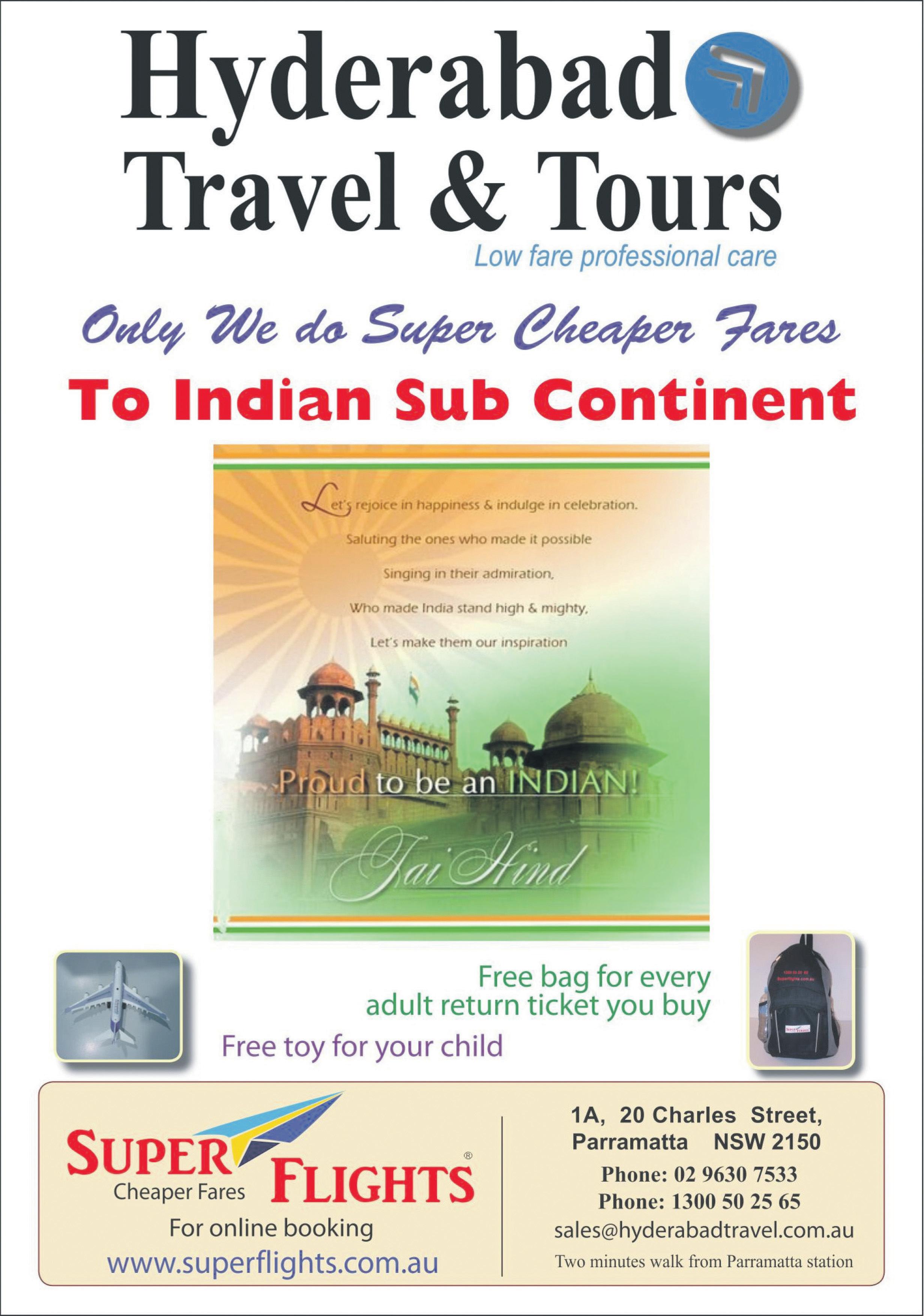
FEBRUARY (2) 2013 49 NATIONAL EDITION

50 FEBRUARY (2) 2013 www.indianlink.com.au
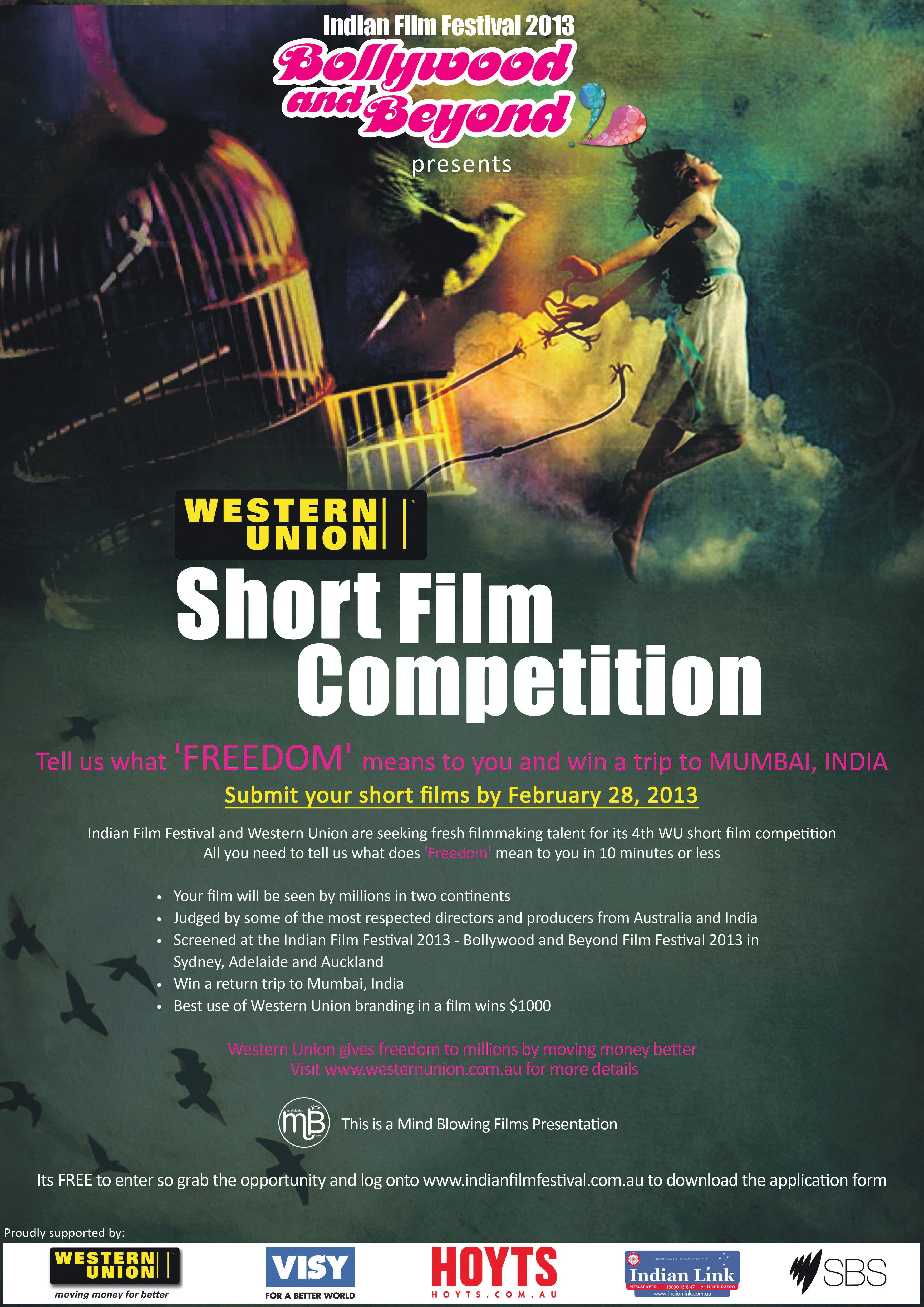
FEBRUARY (2) 2013 51 NATIONAL EDITION

52 FEBRUARY (2) 2013 www.indianlink.com.au



















































 BY PREETI JABBAL
BY PREETI JABBAL




 Monique La Fontaine
Monique La Fontaine









































































